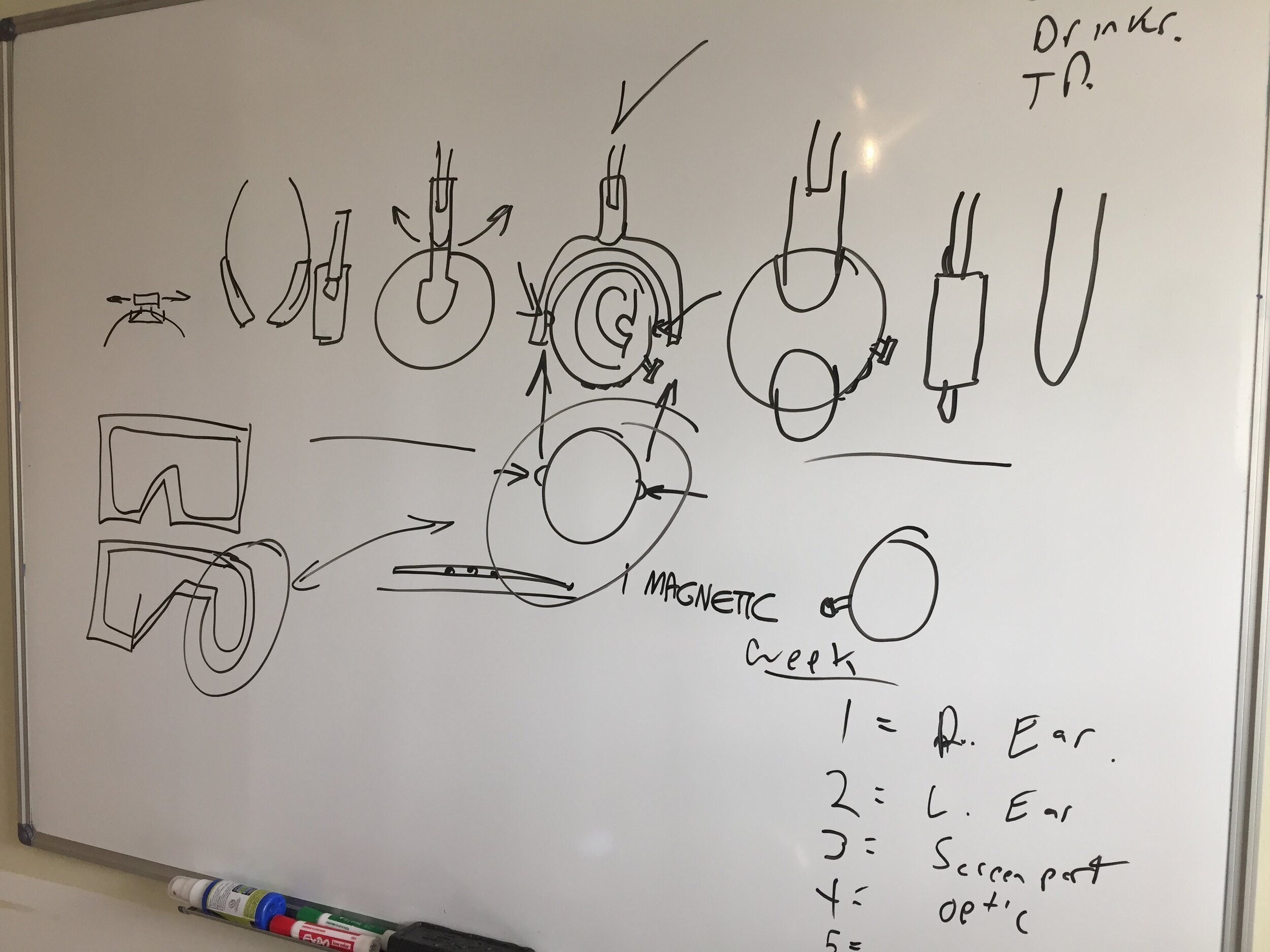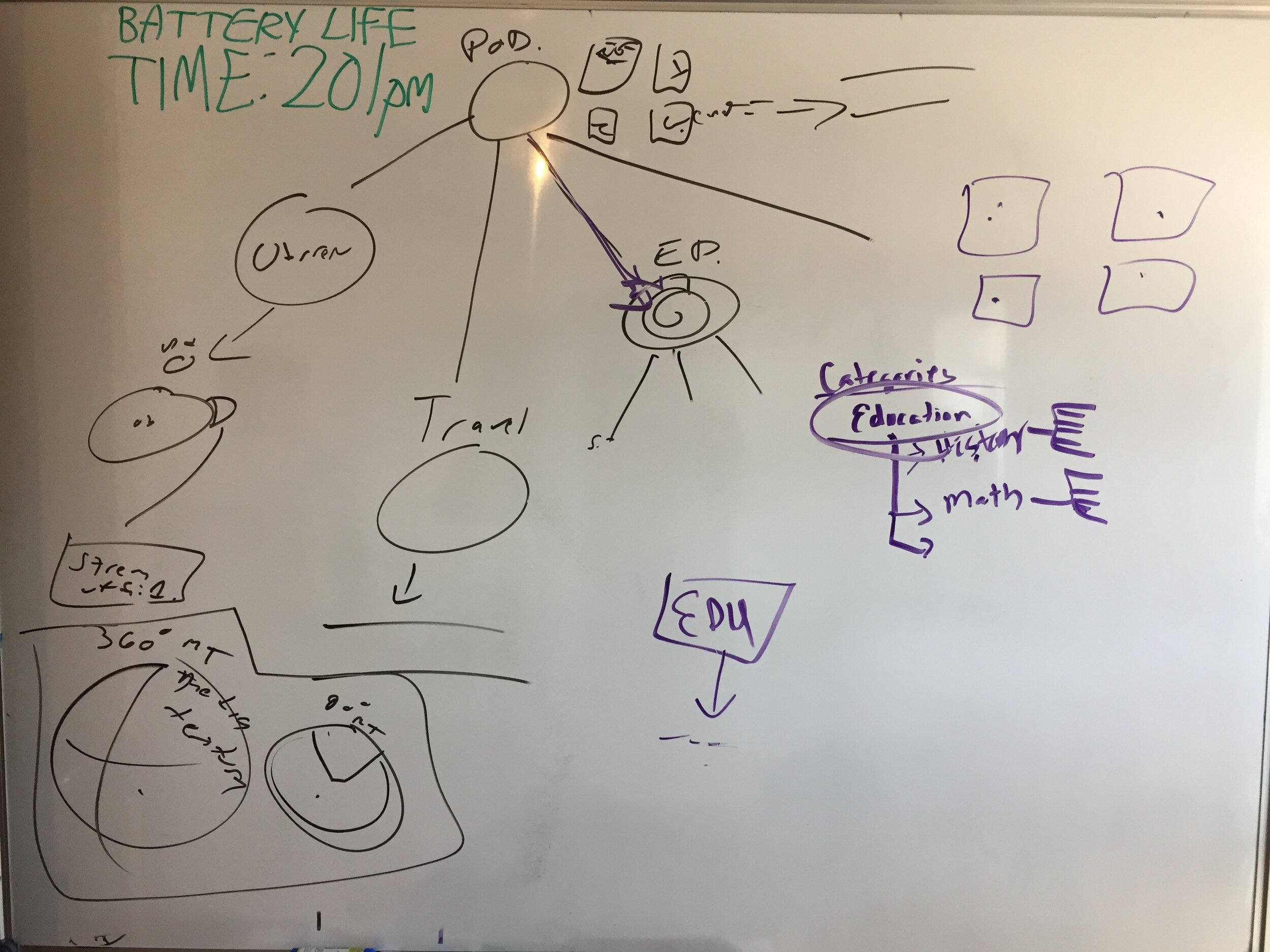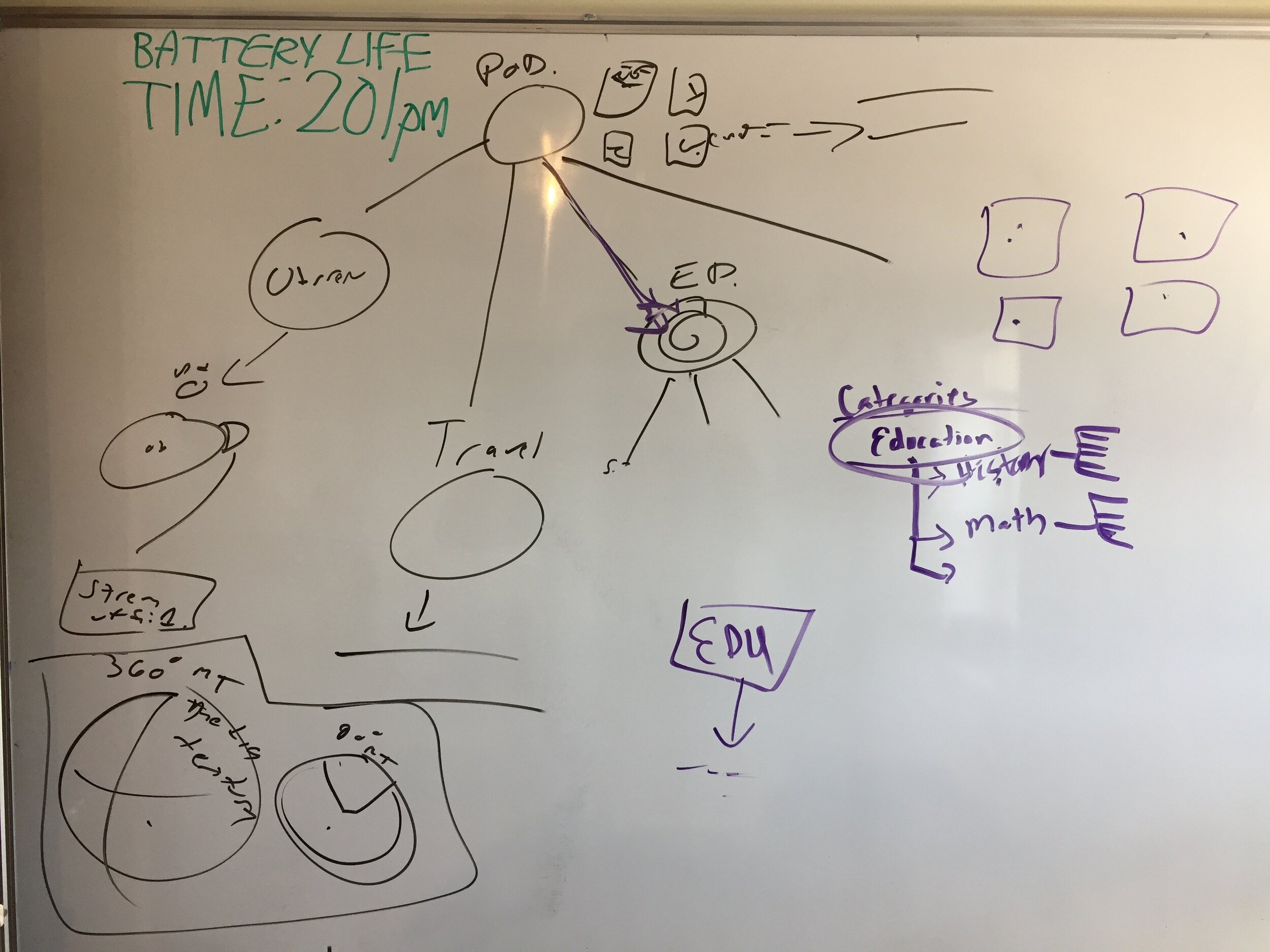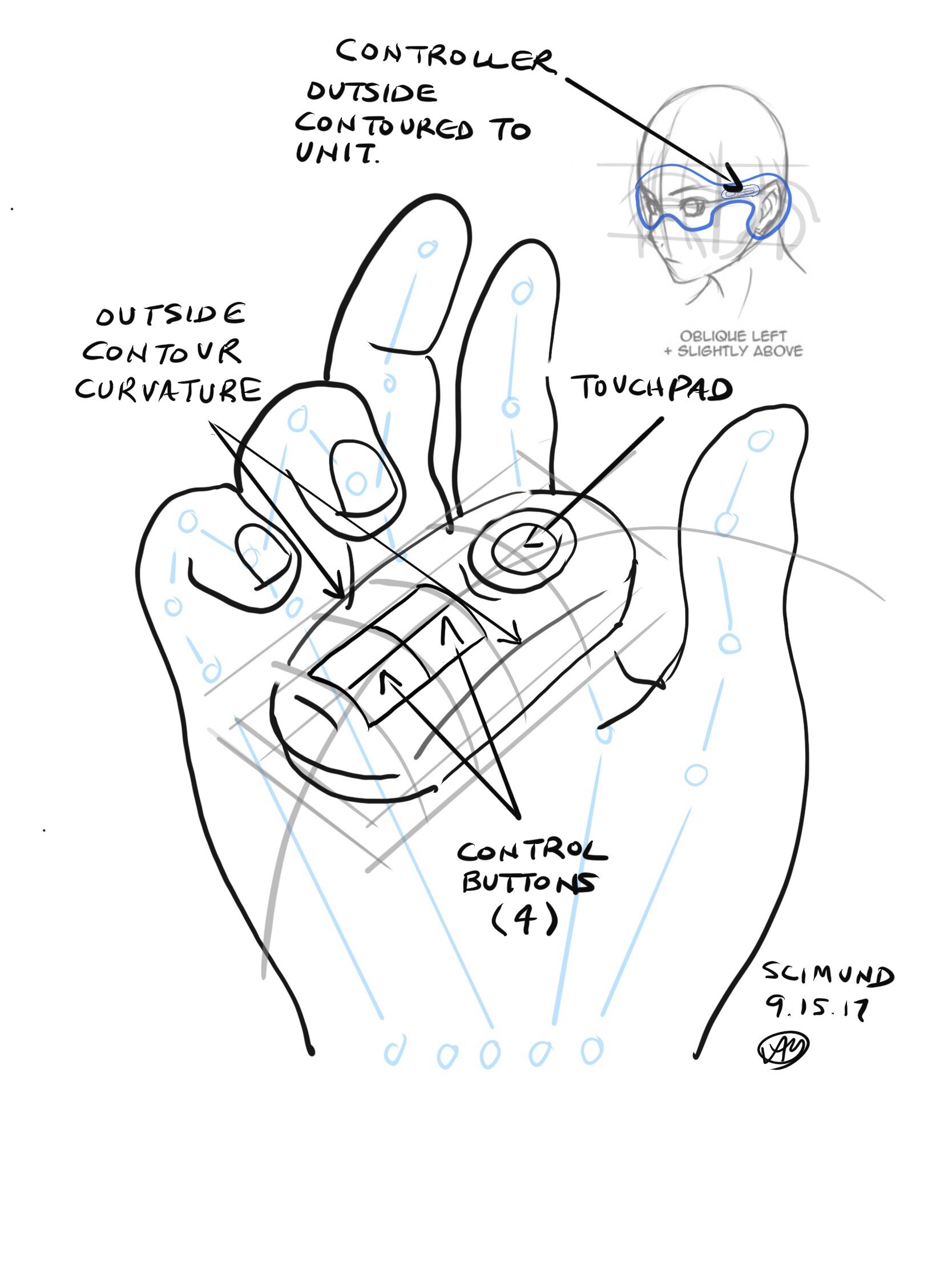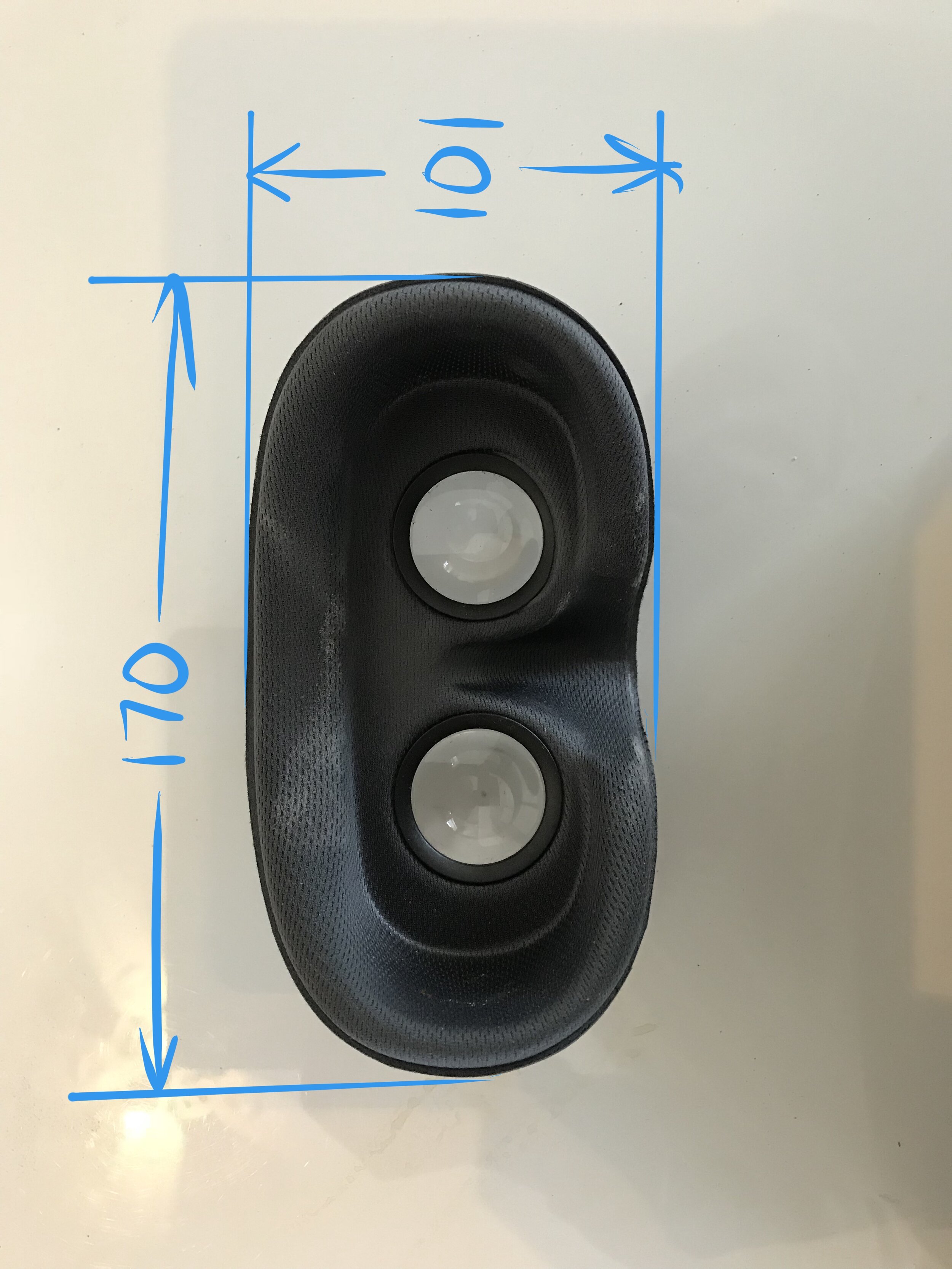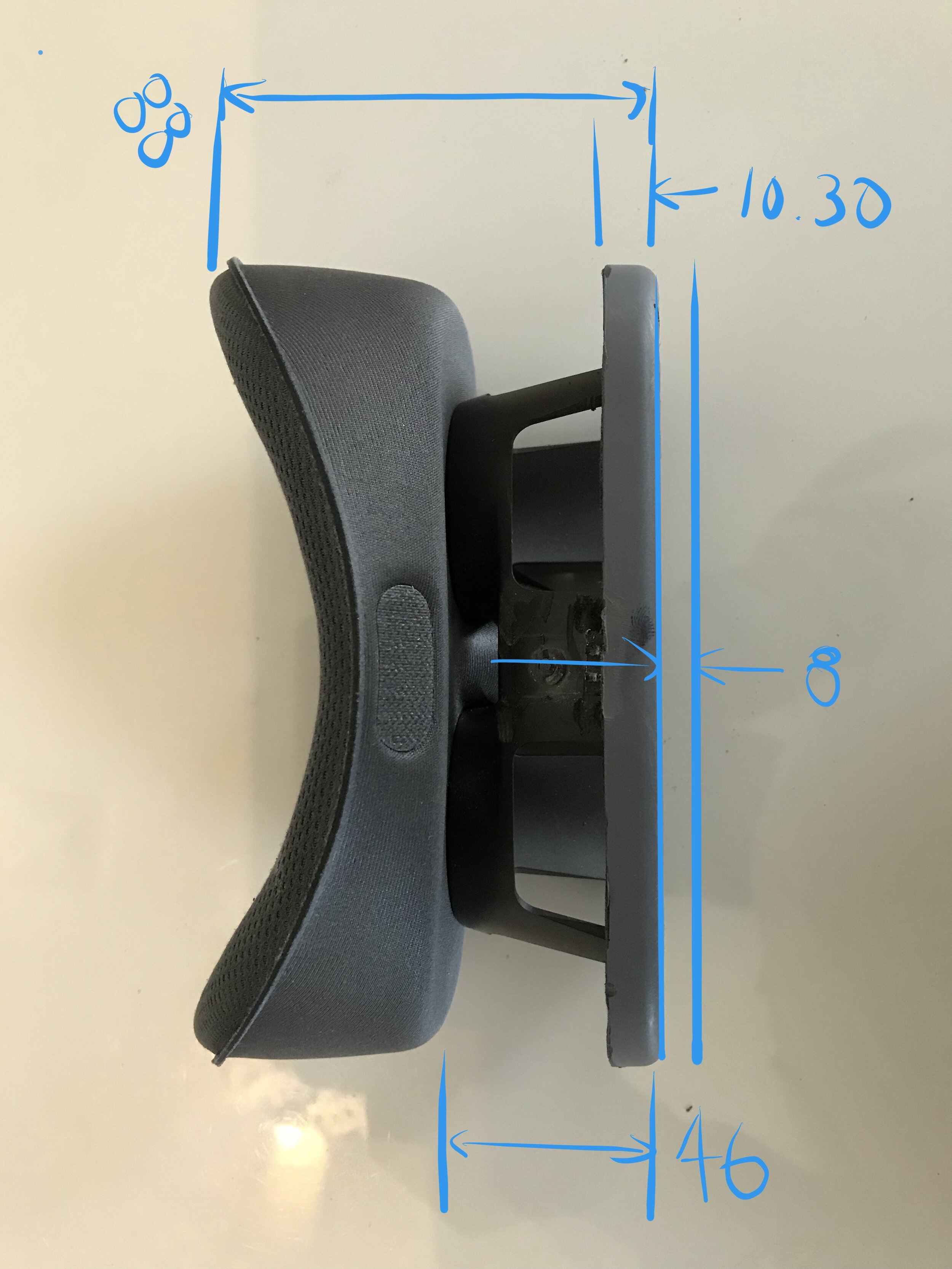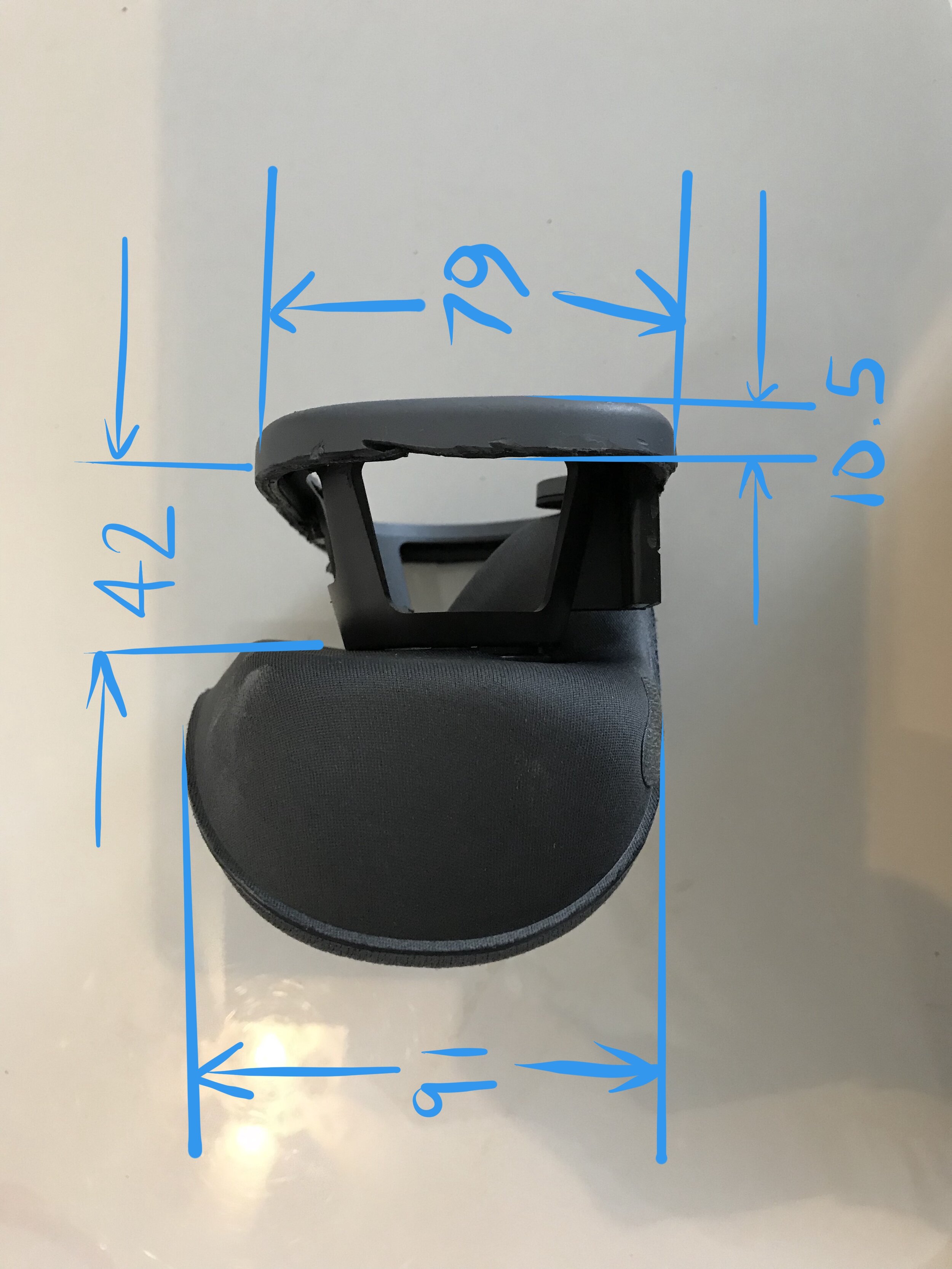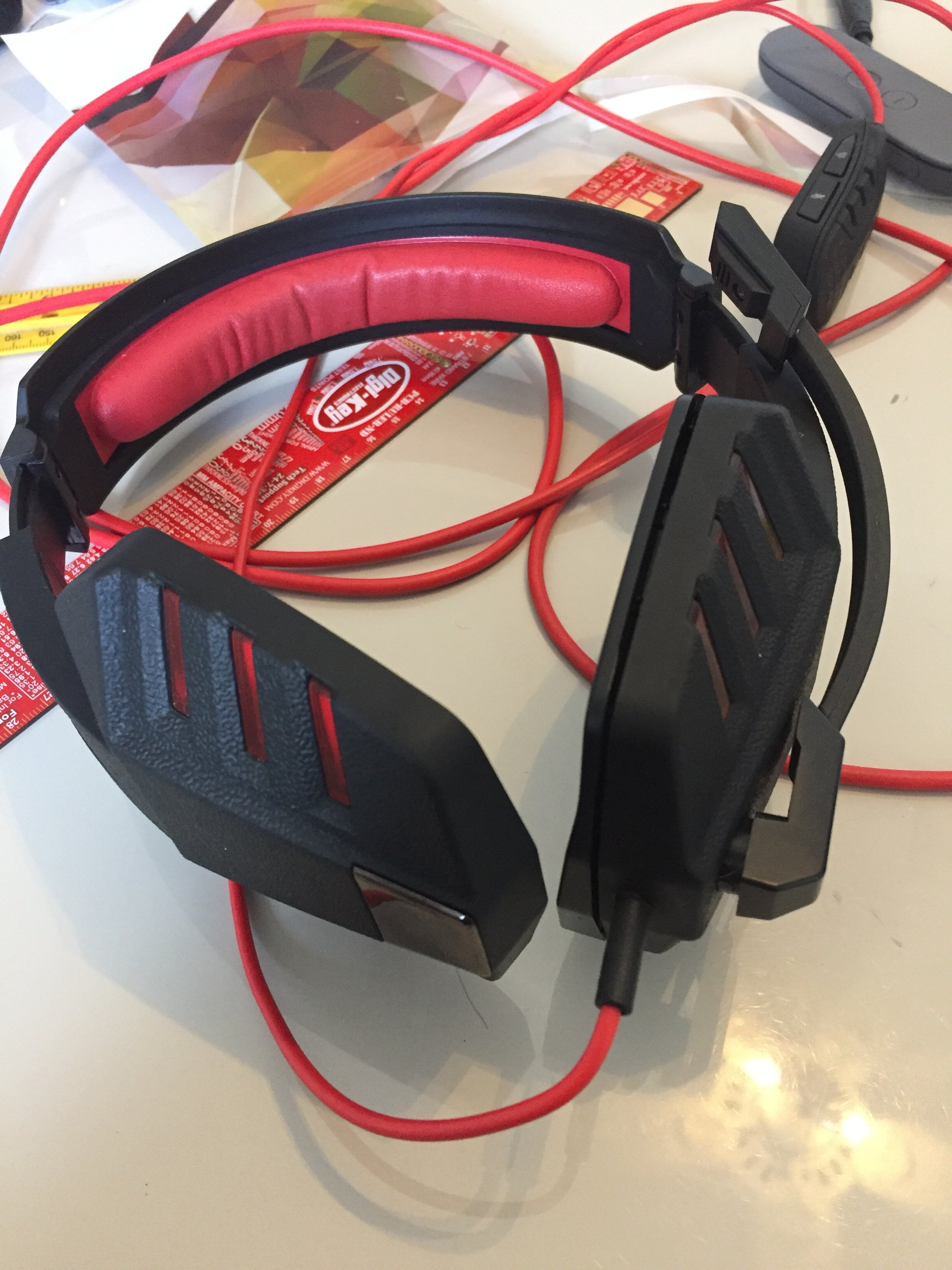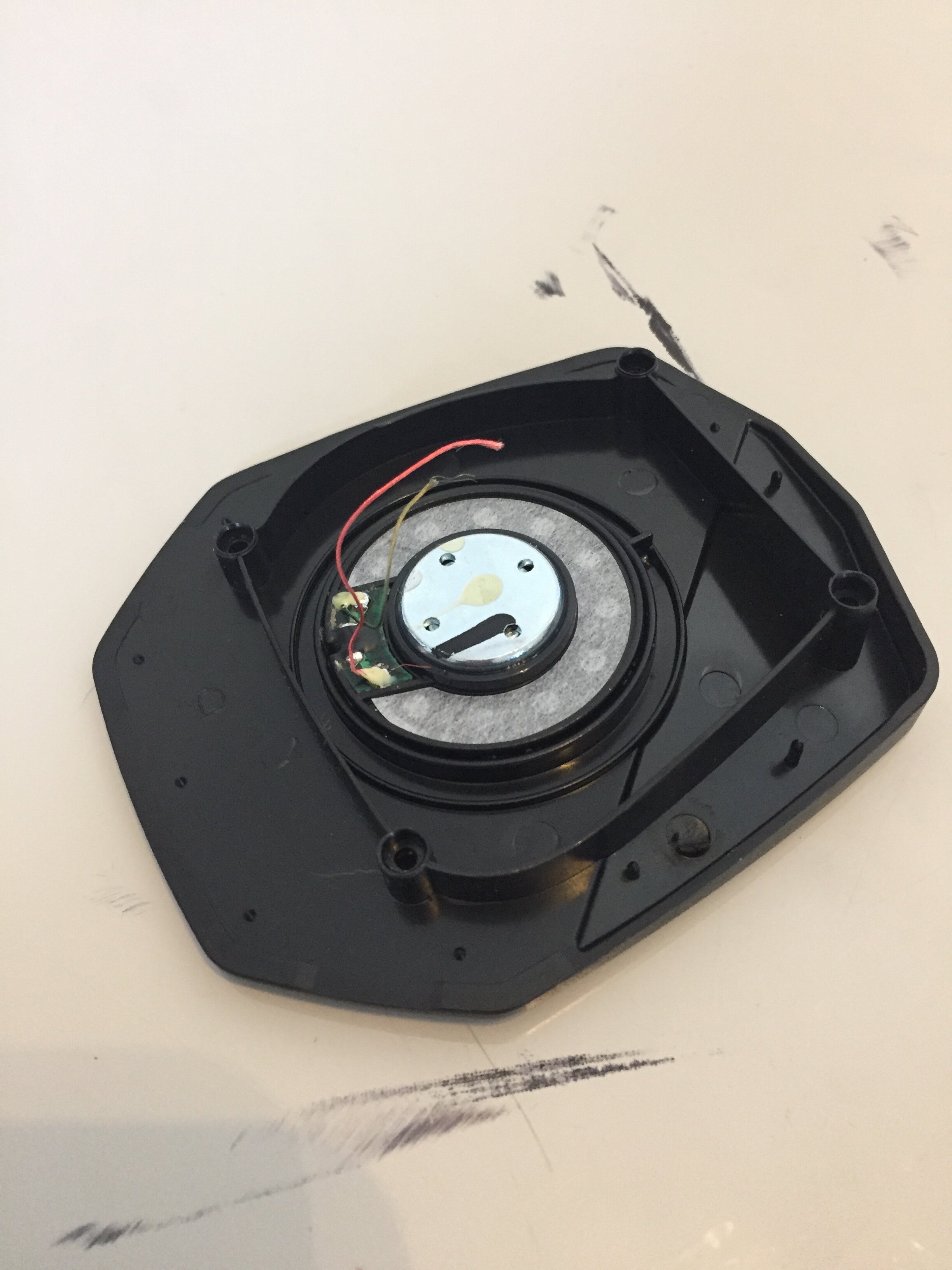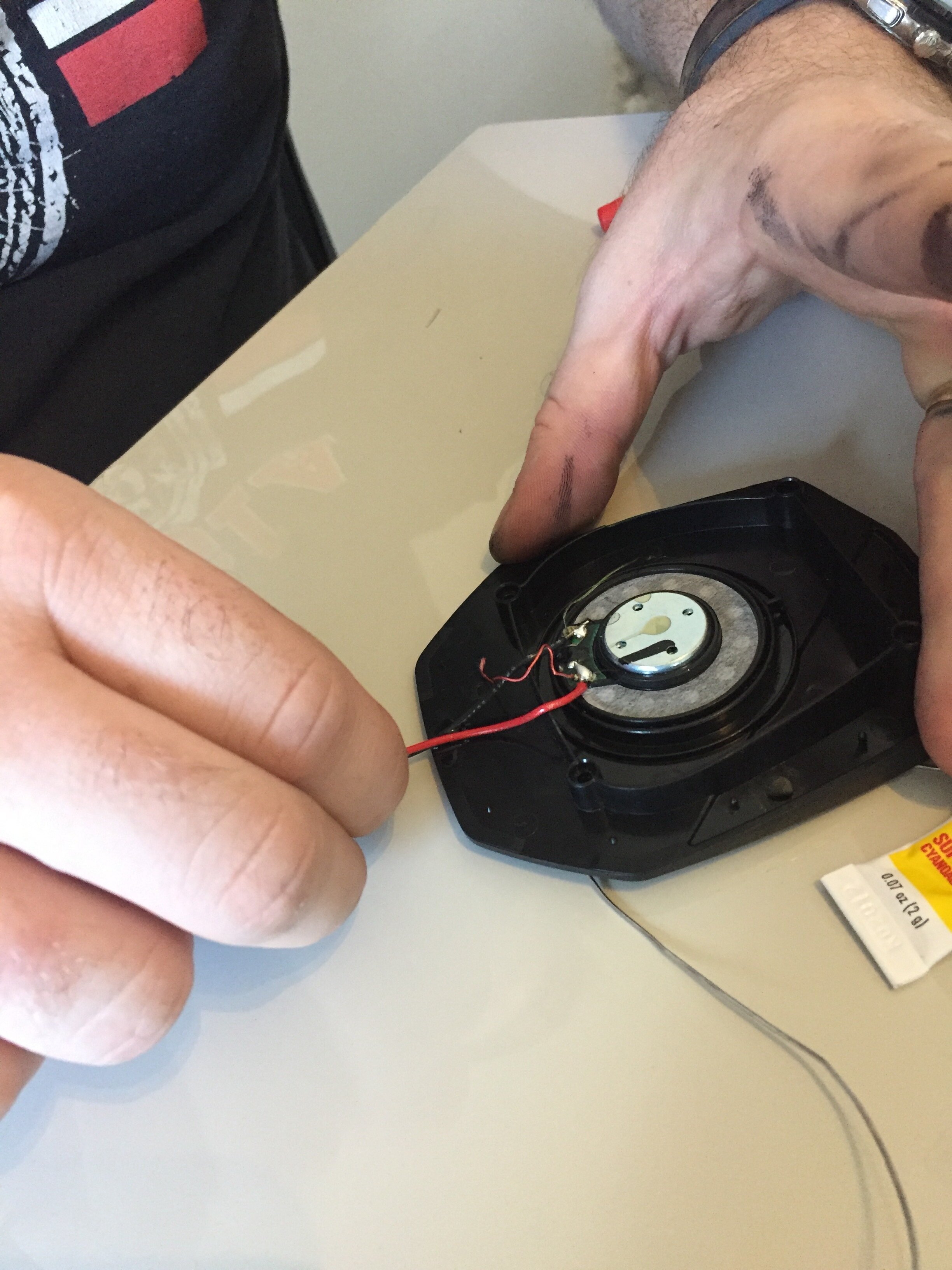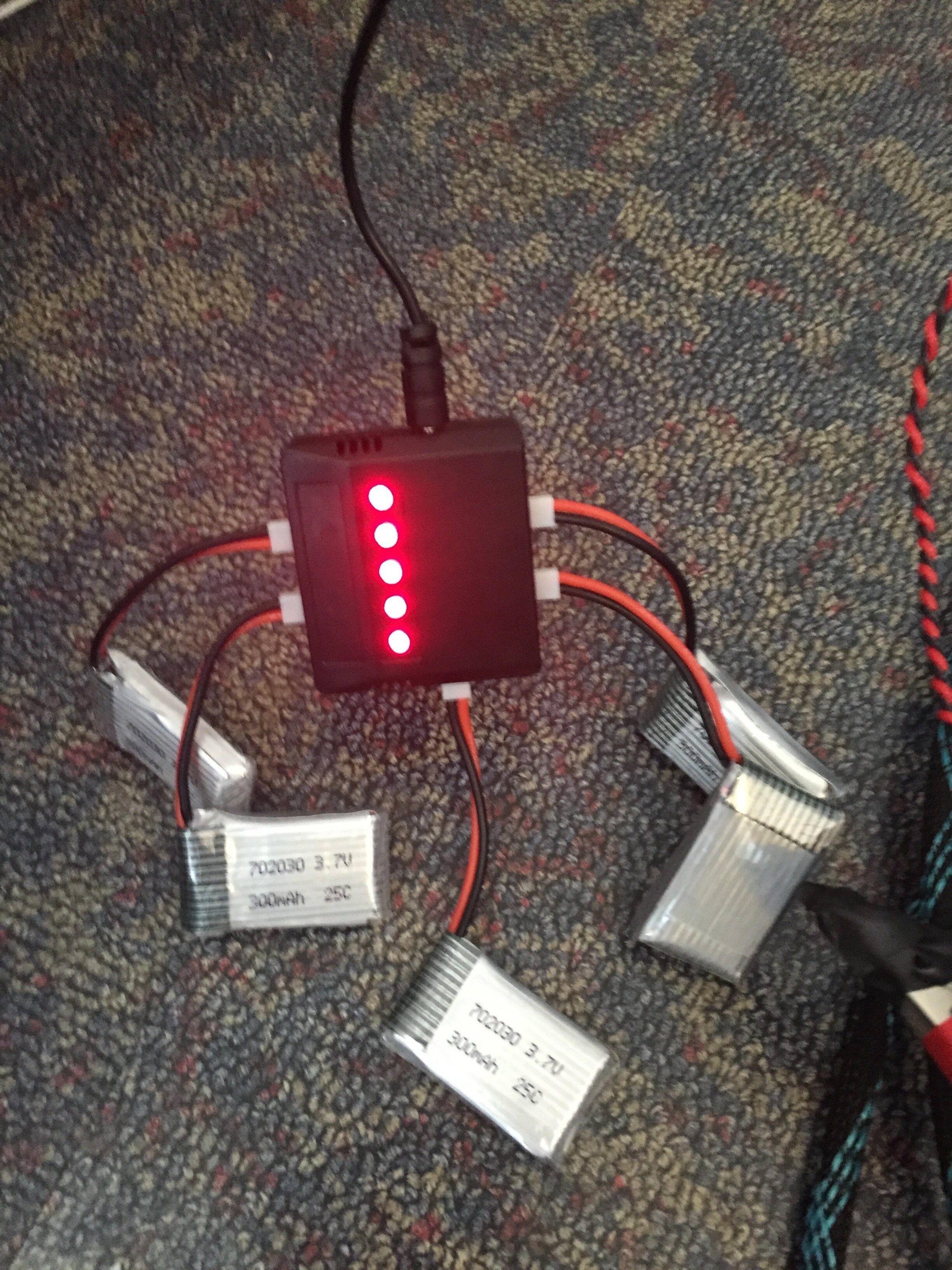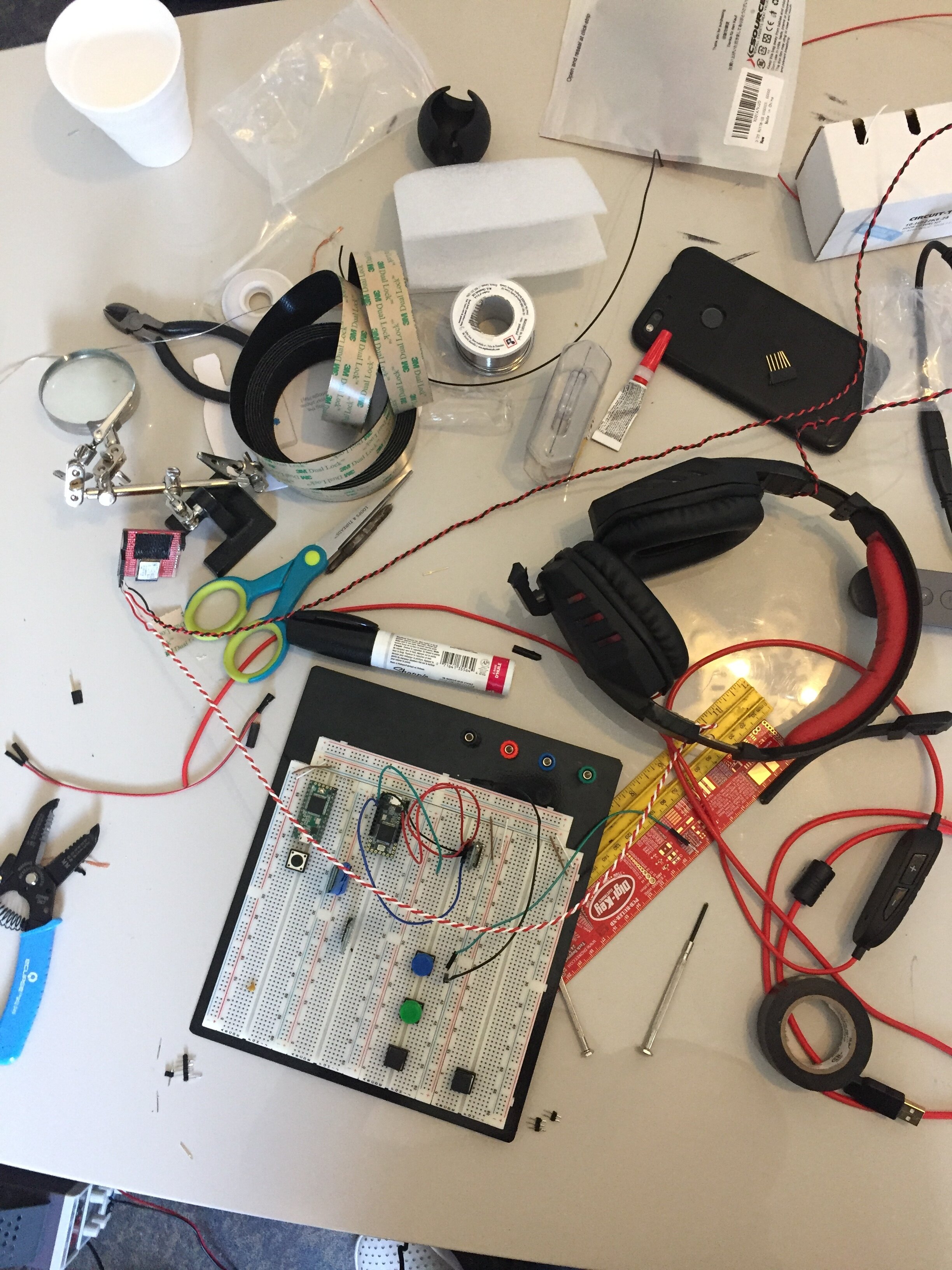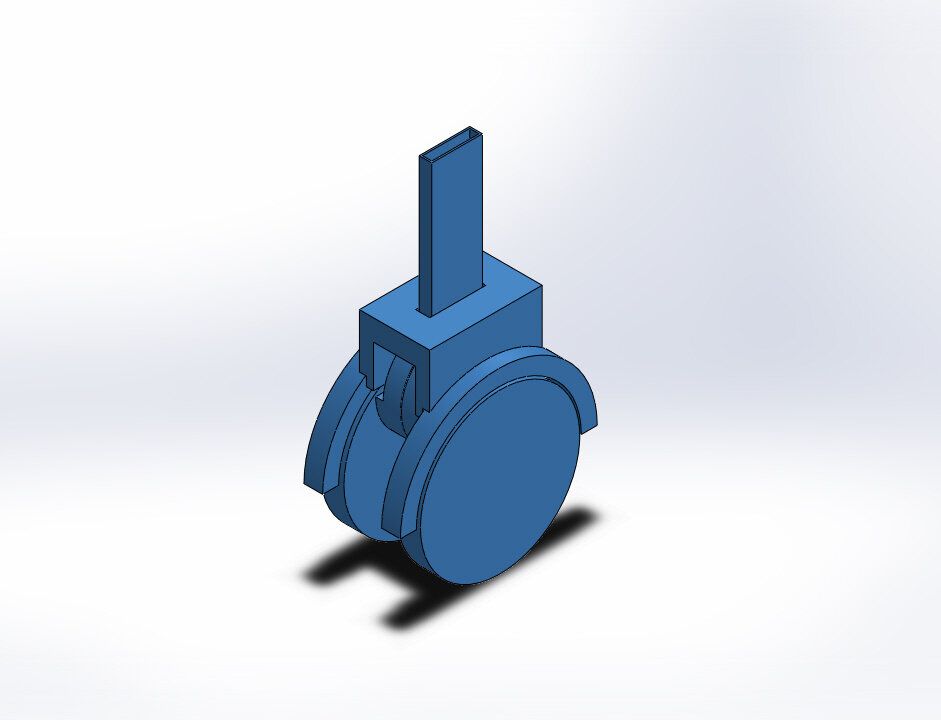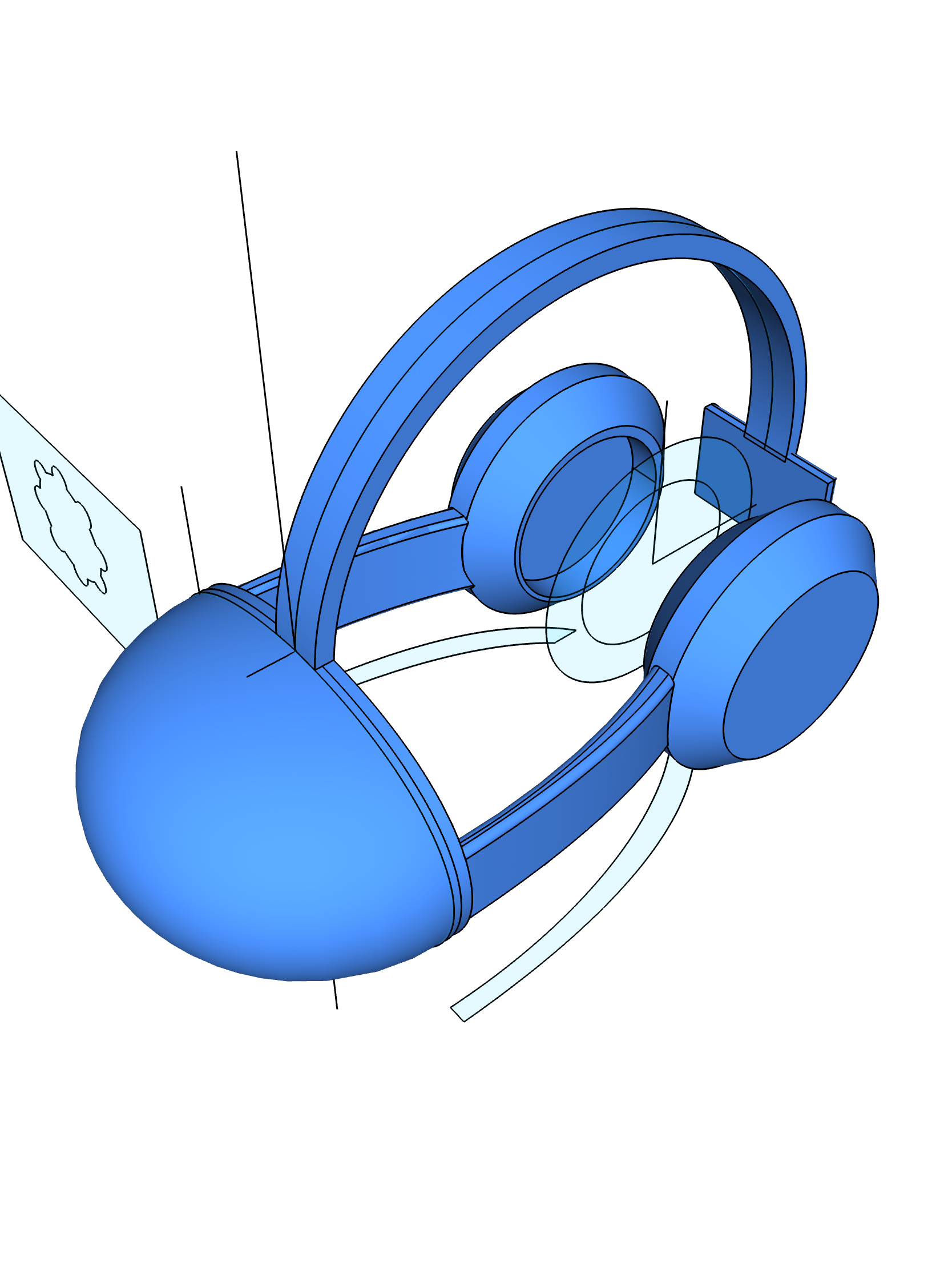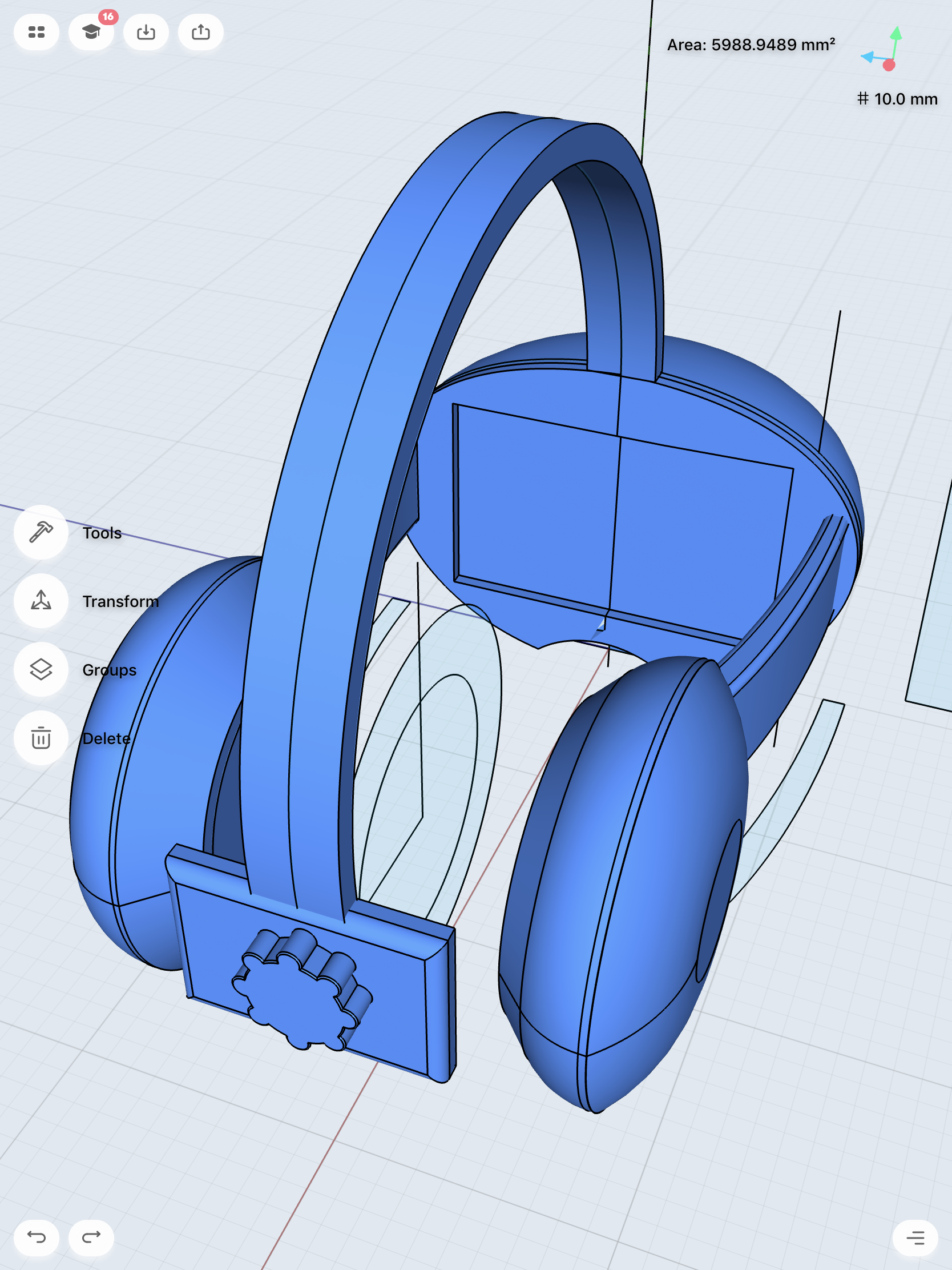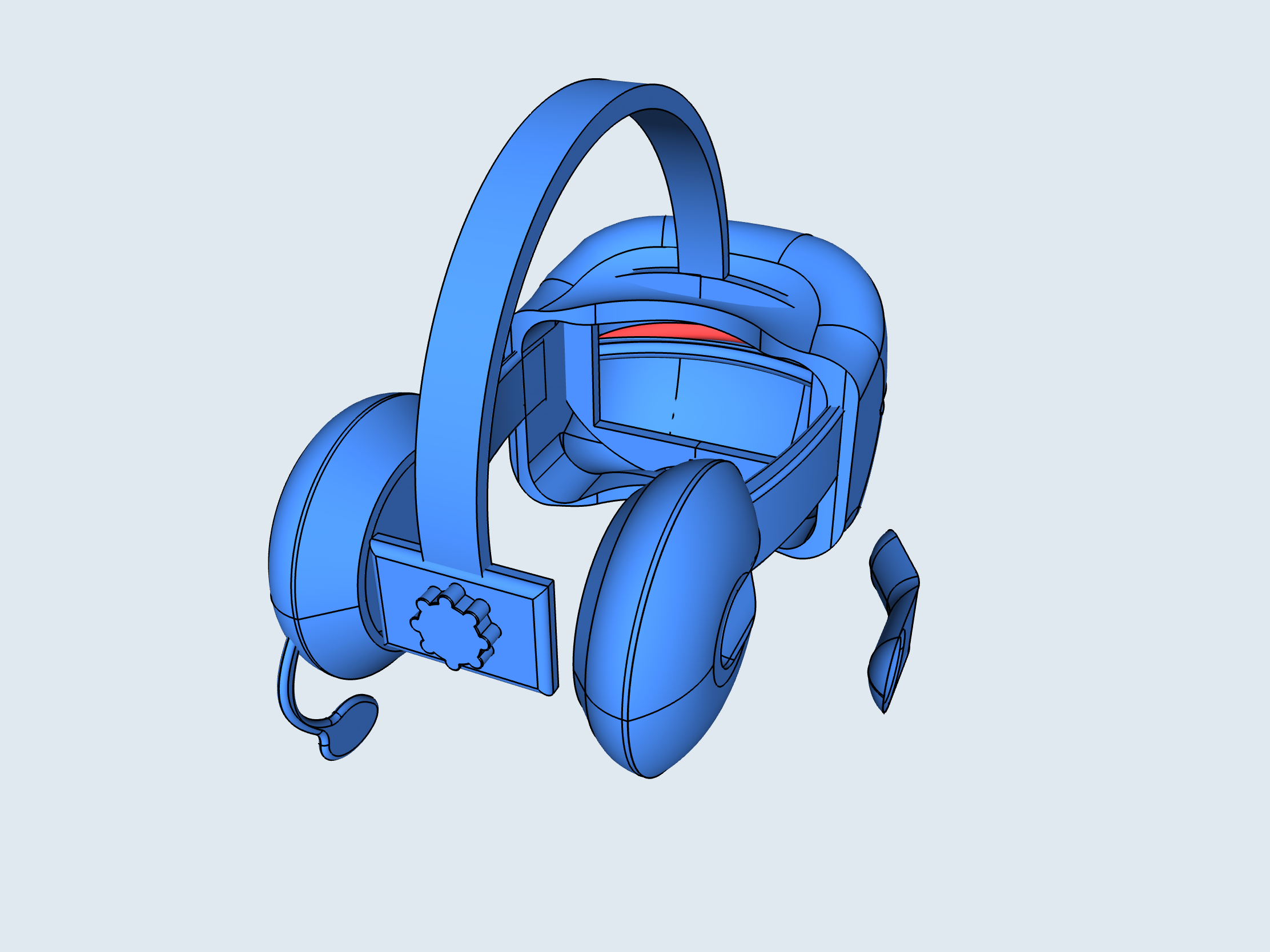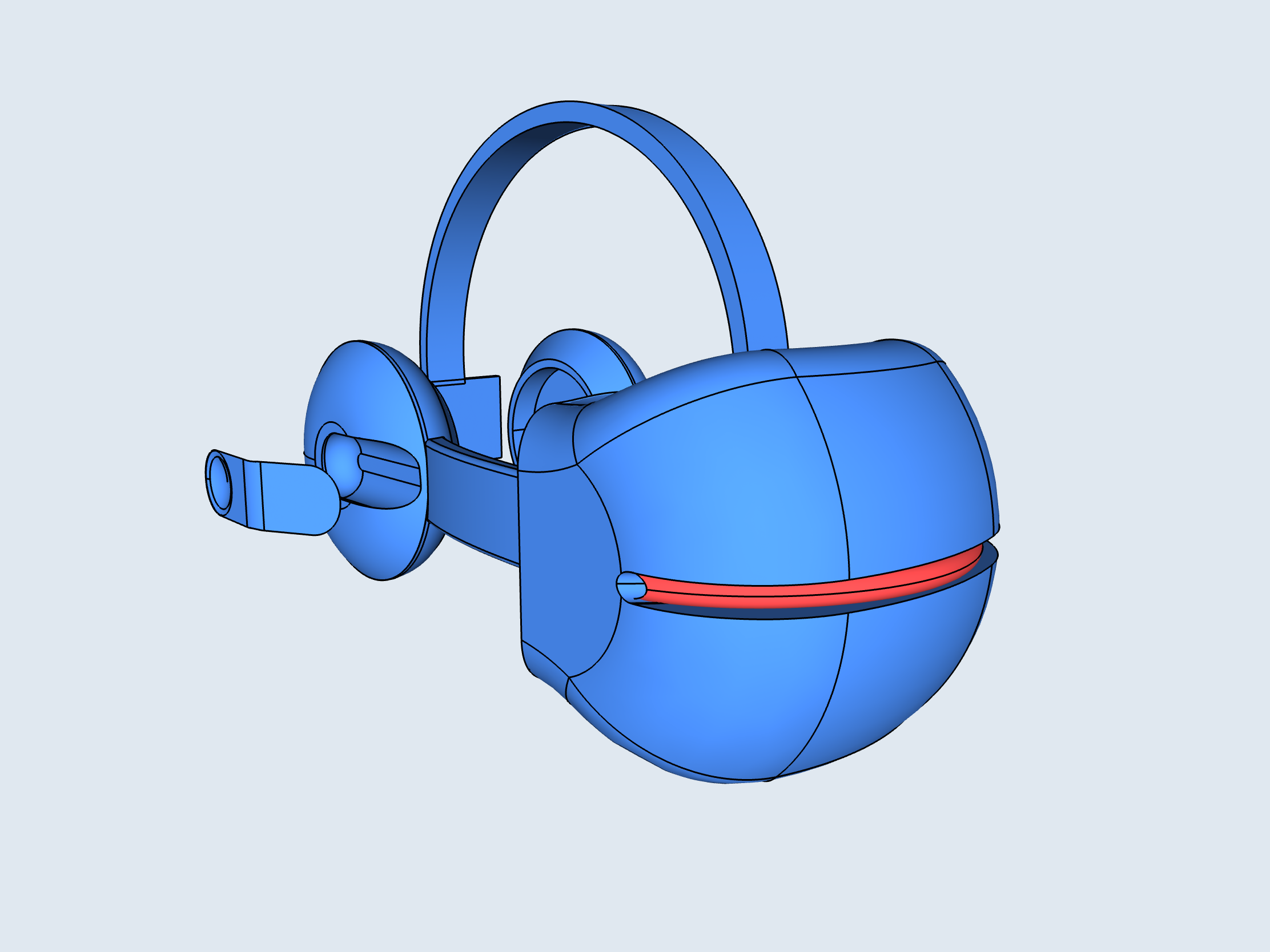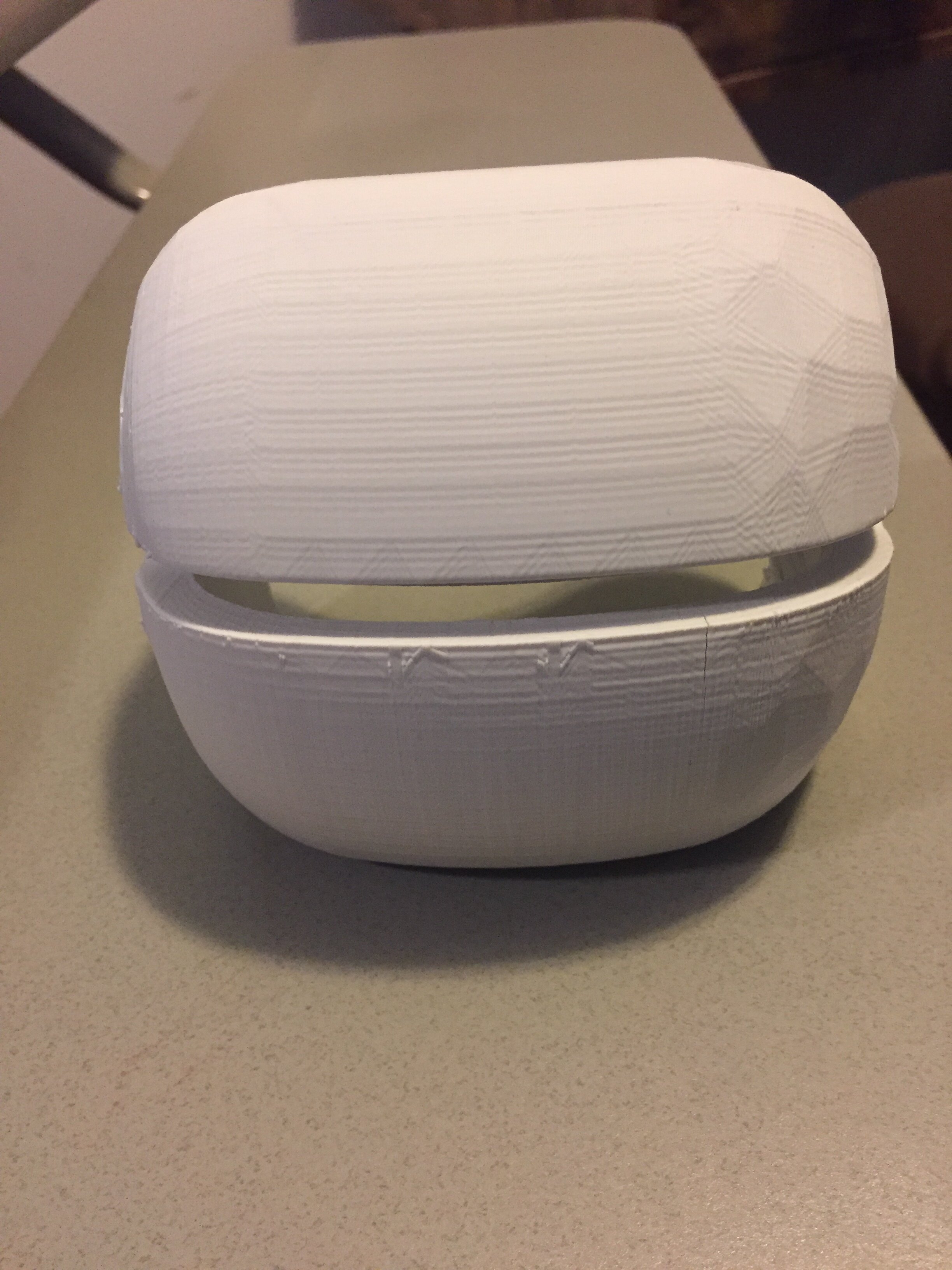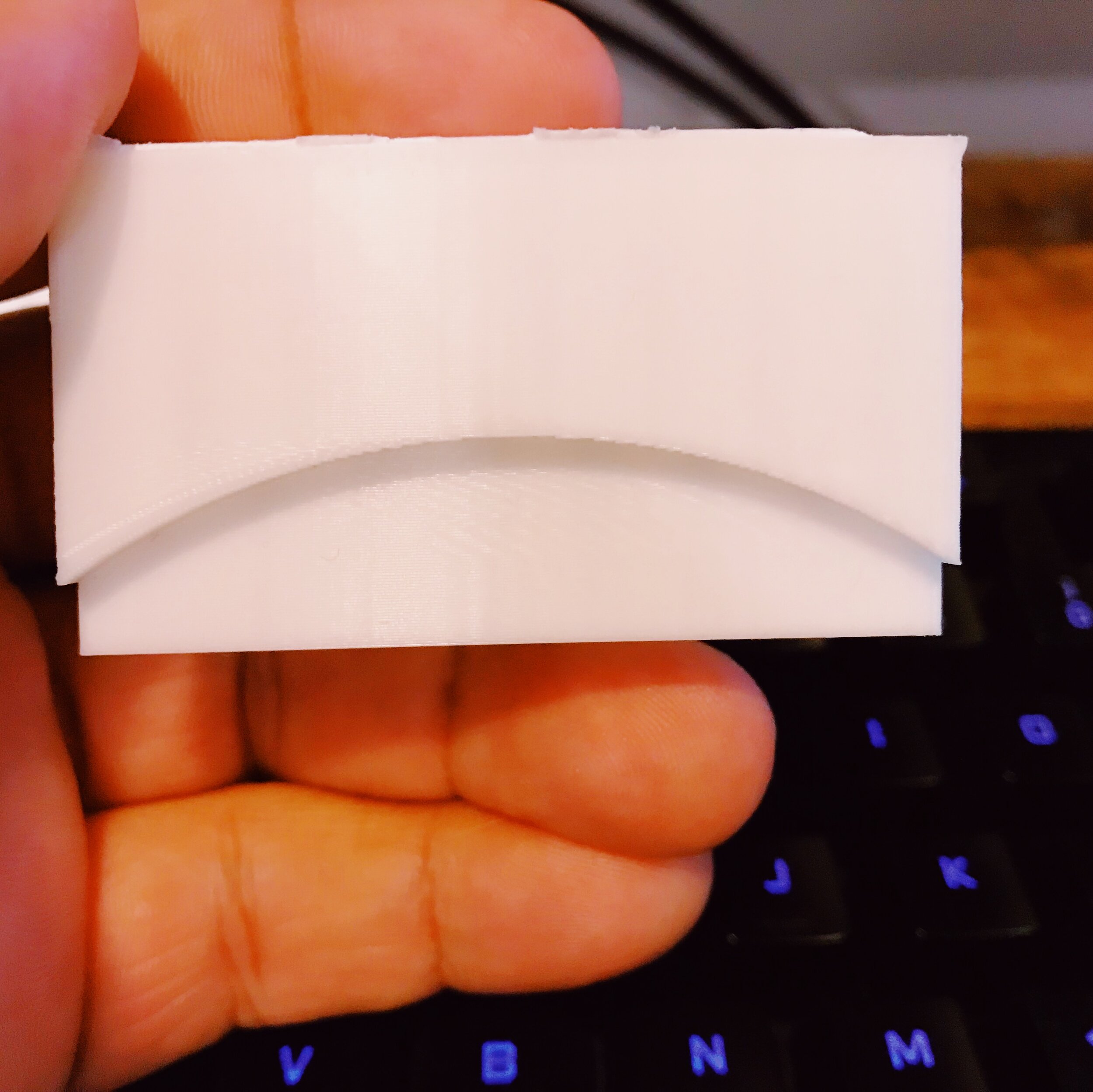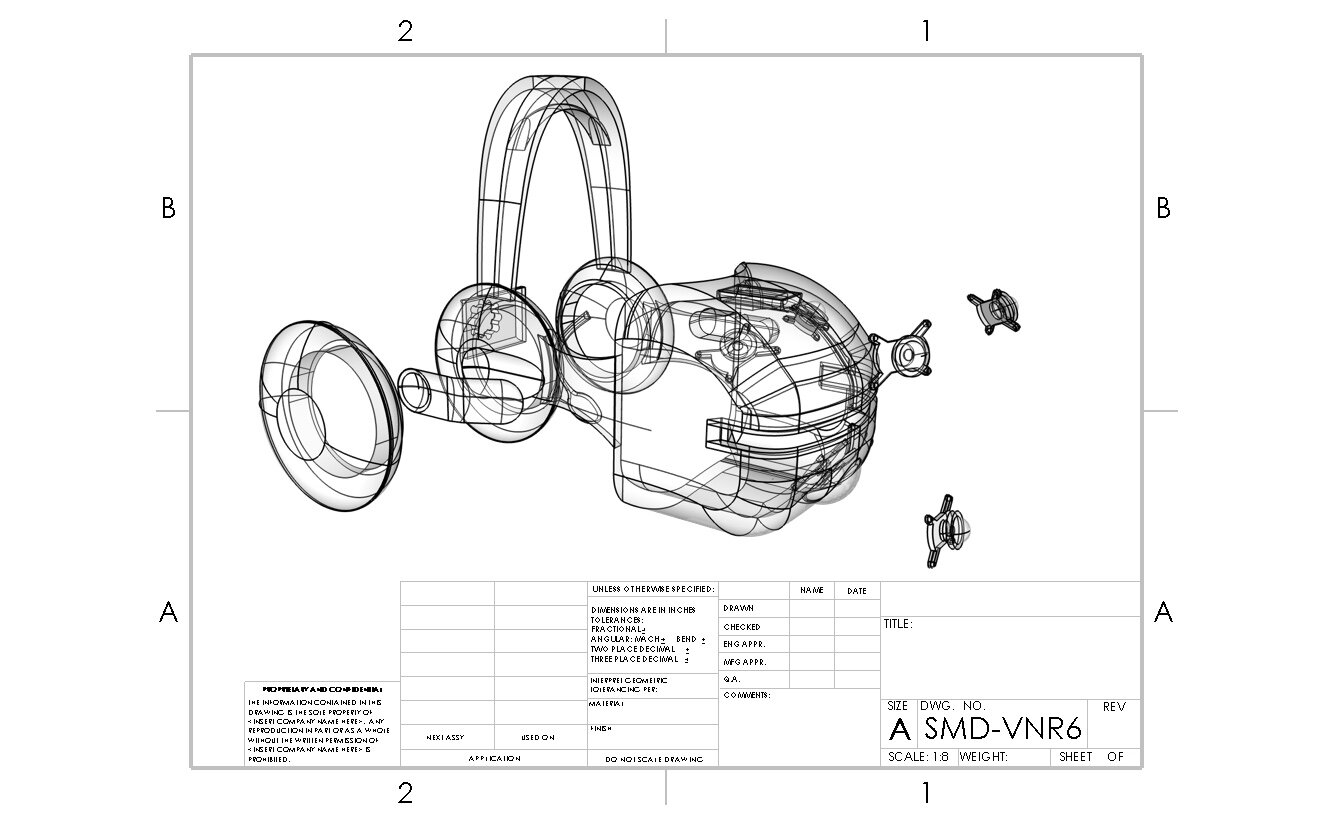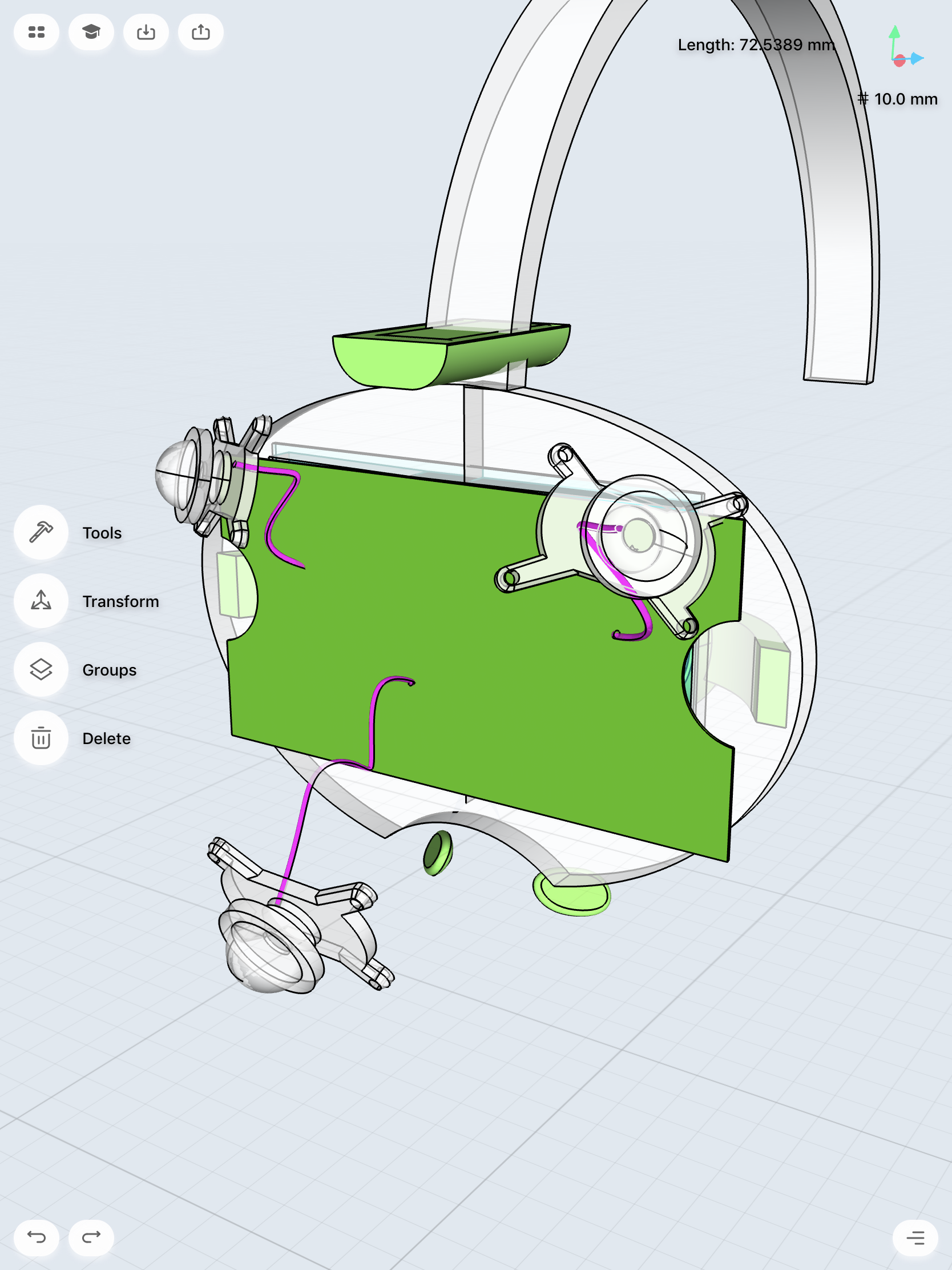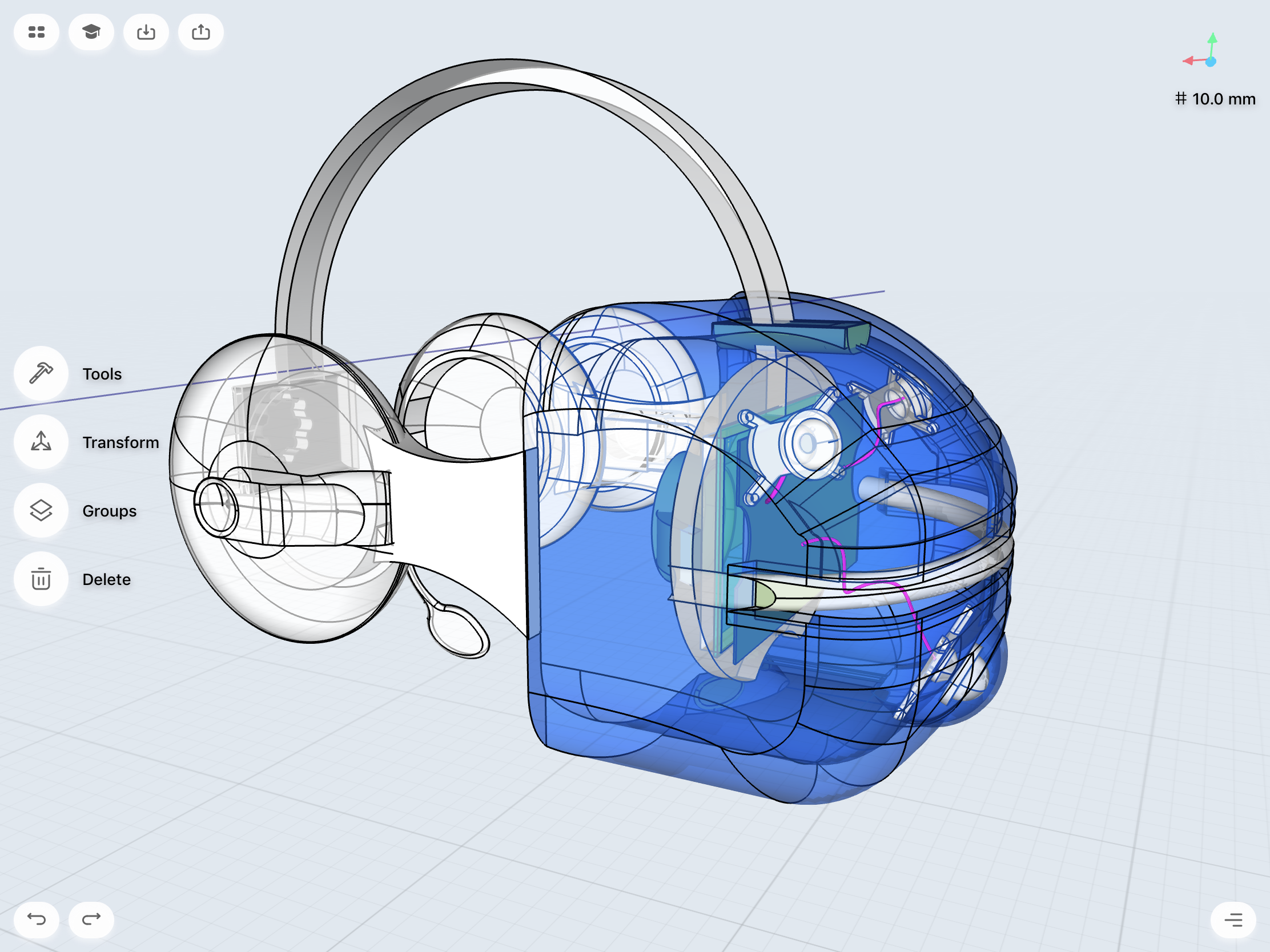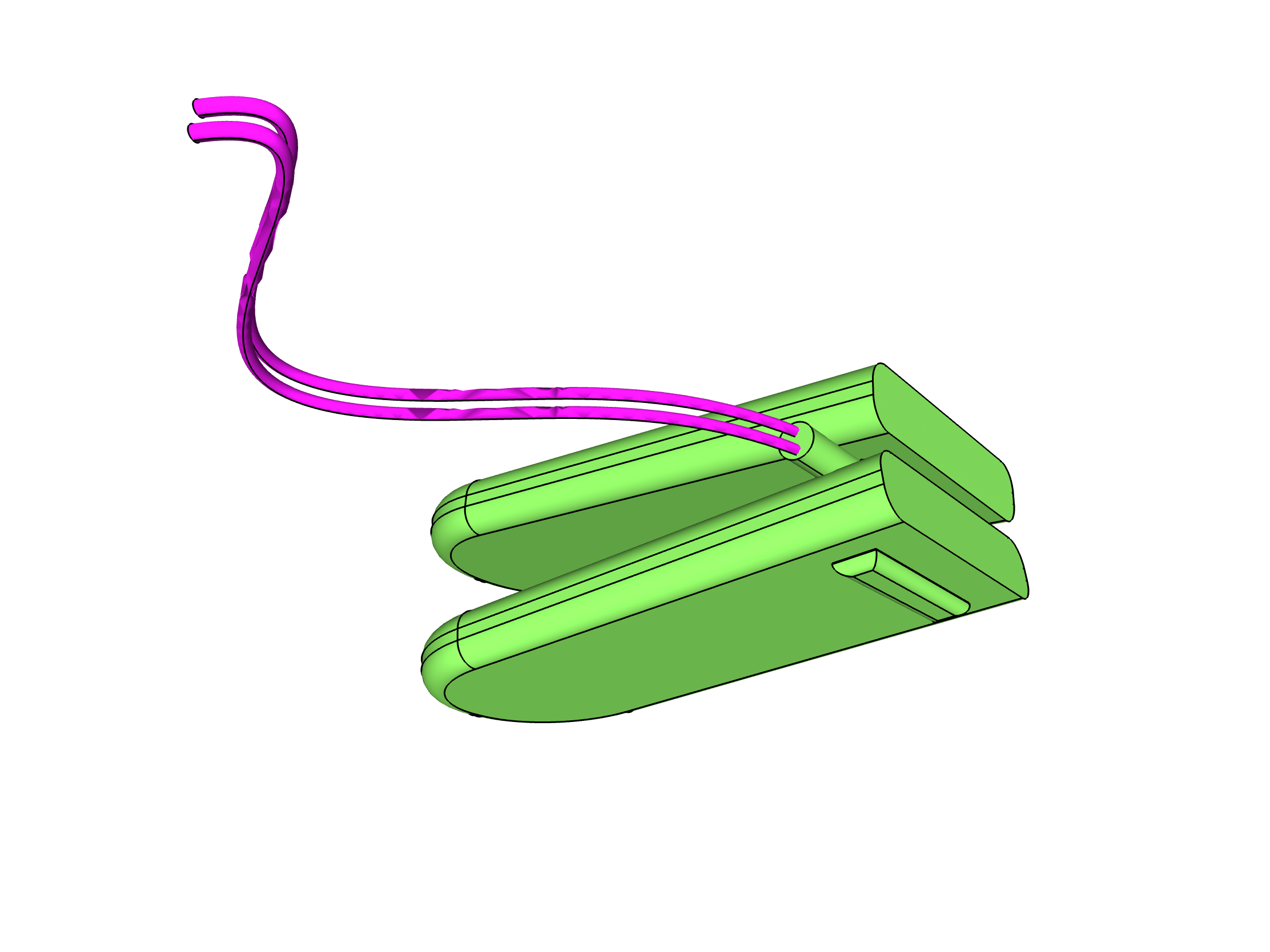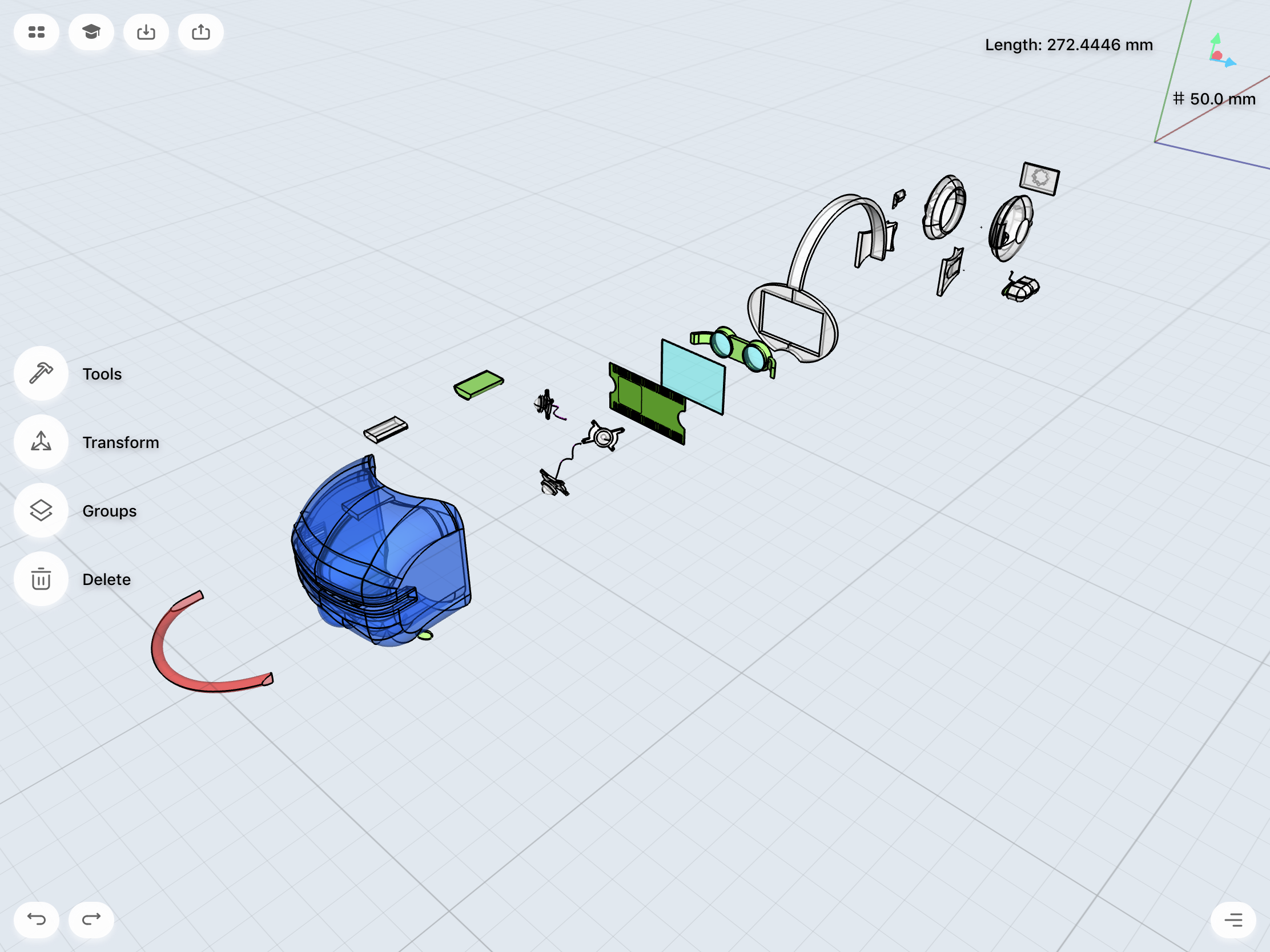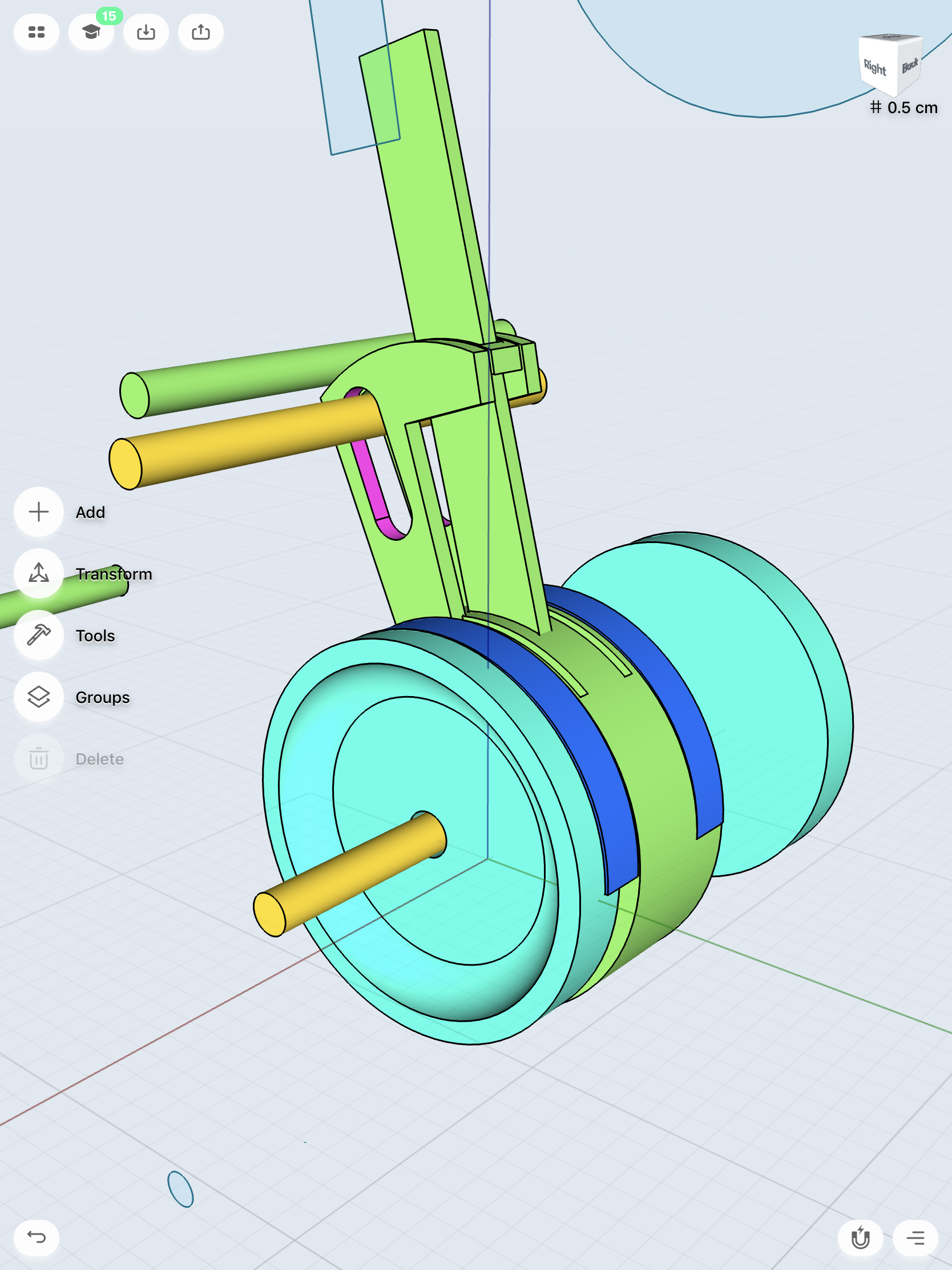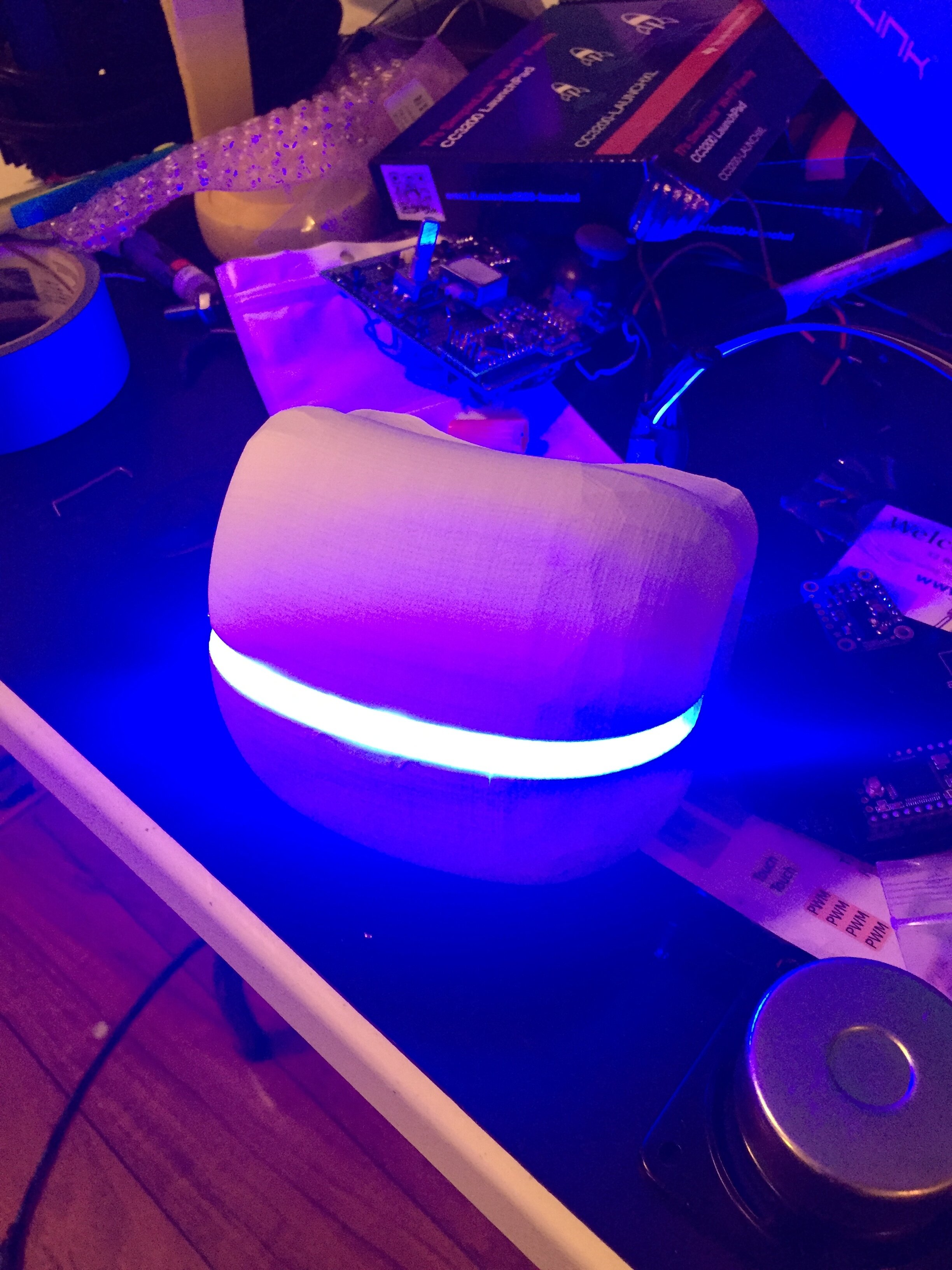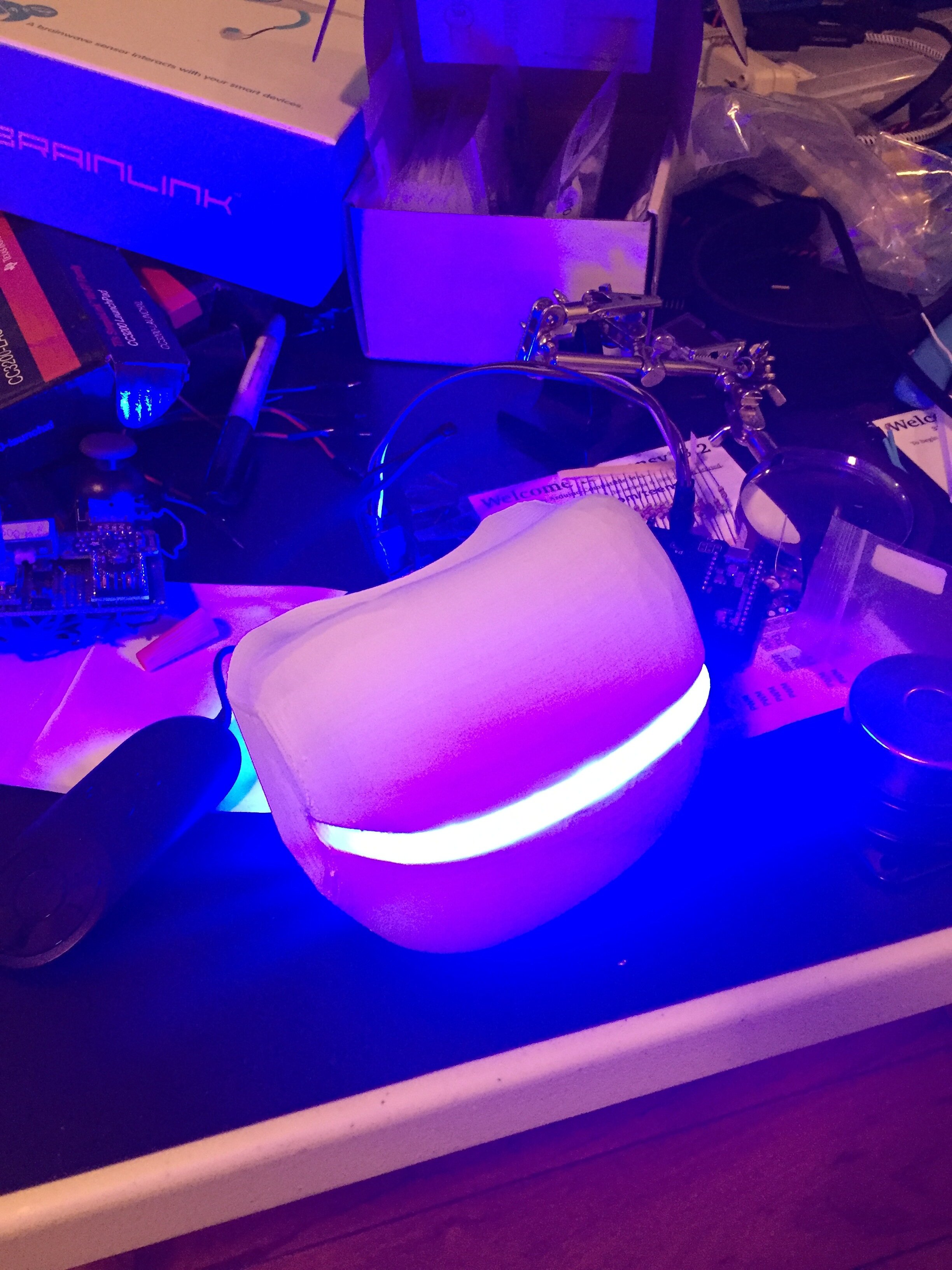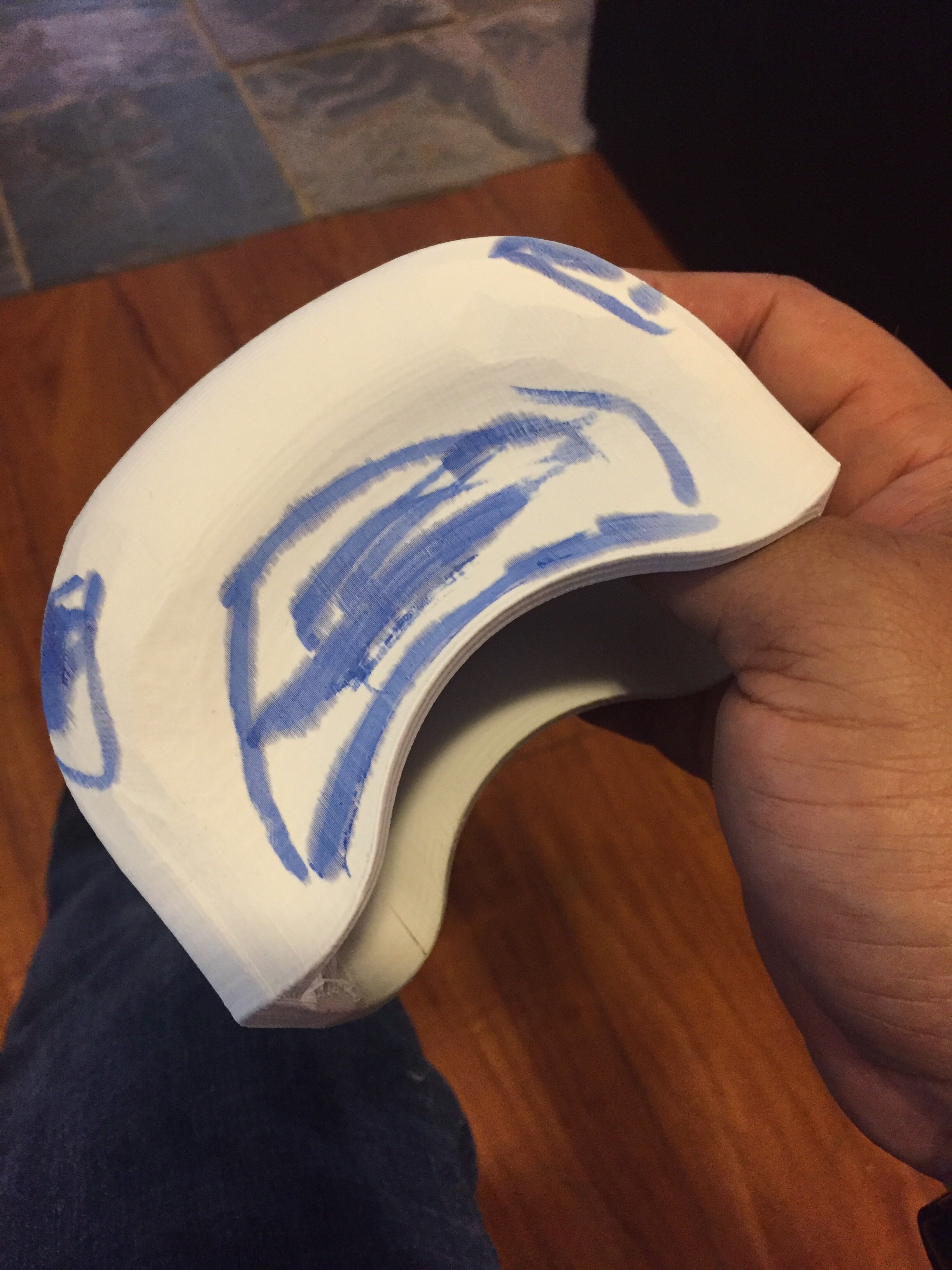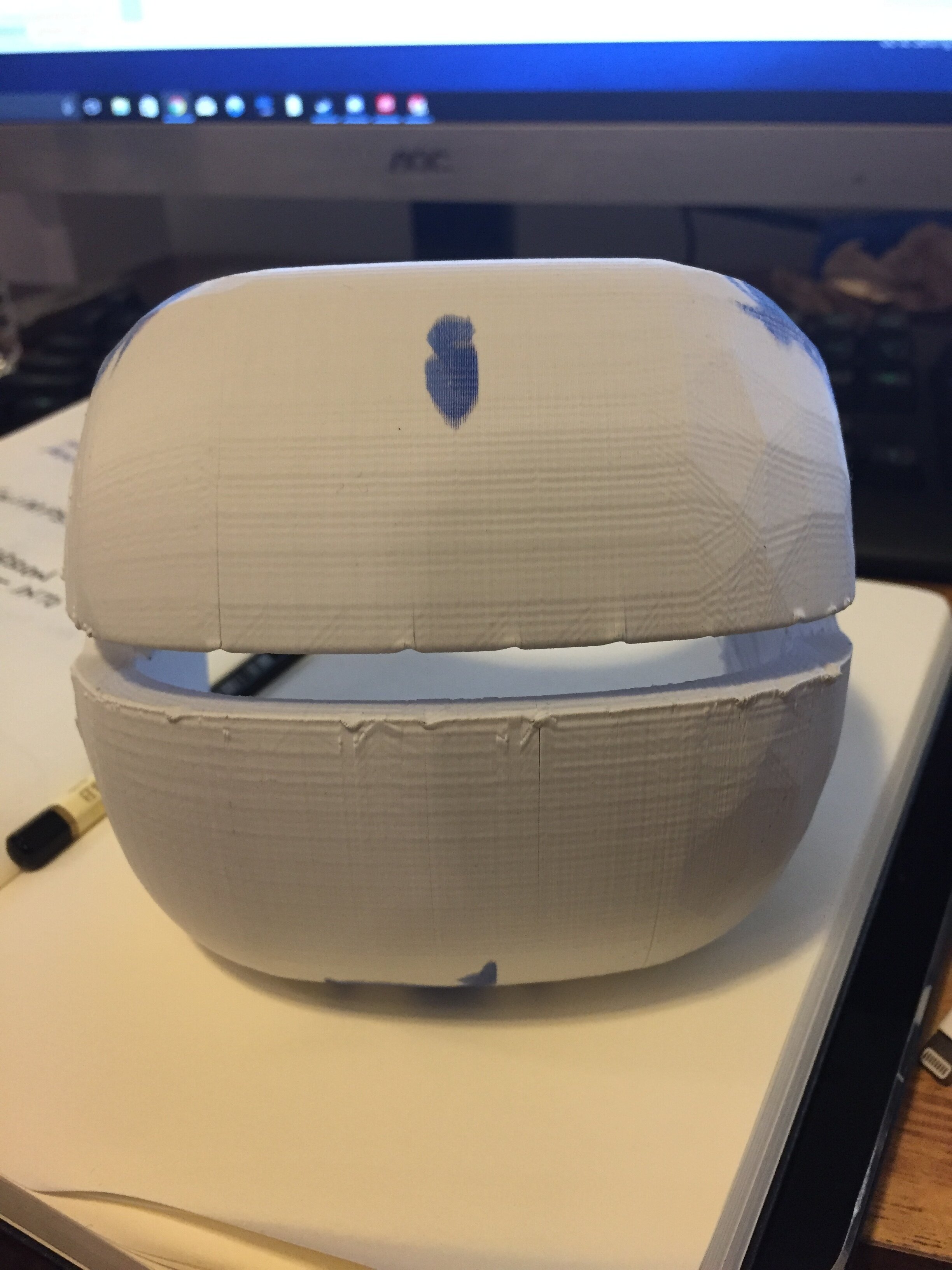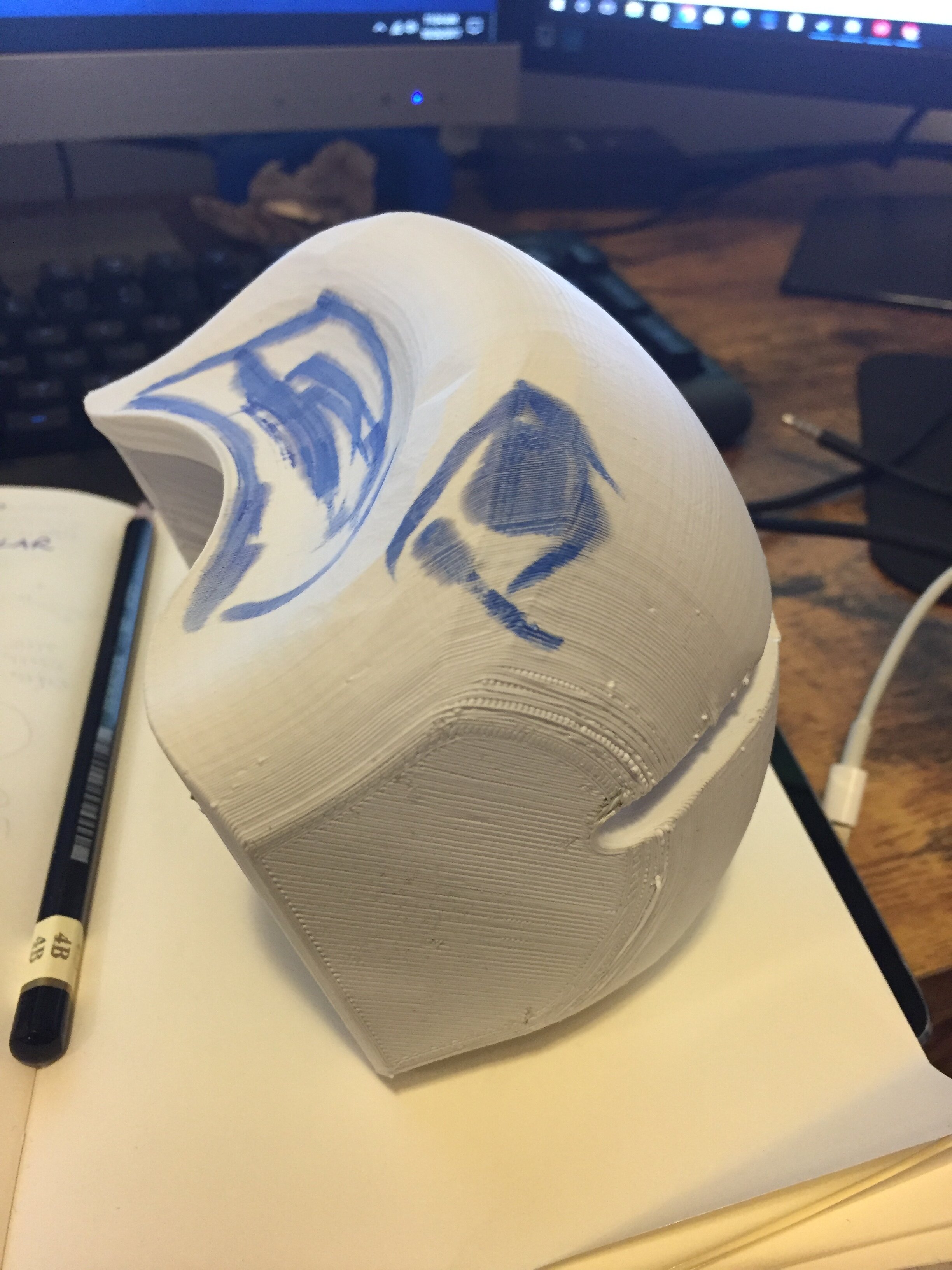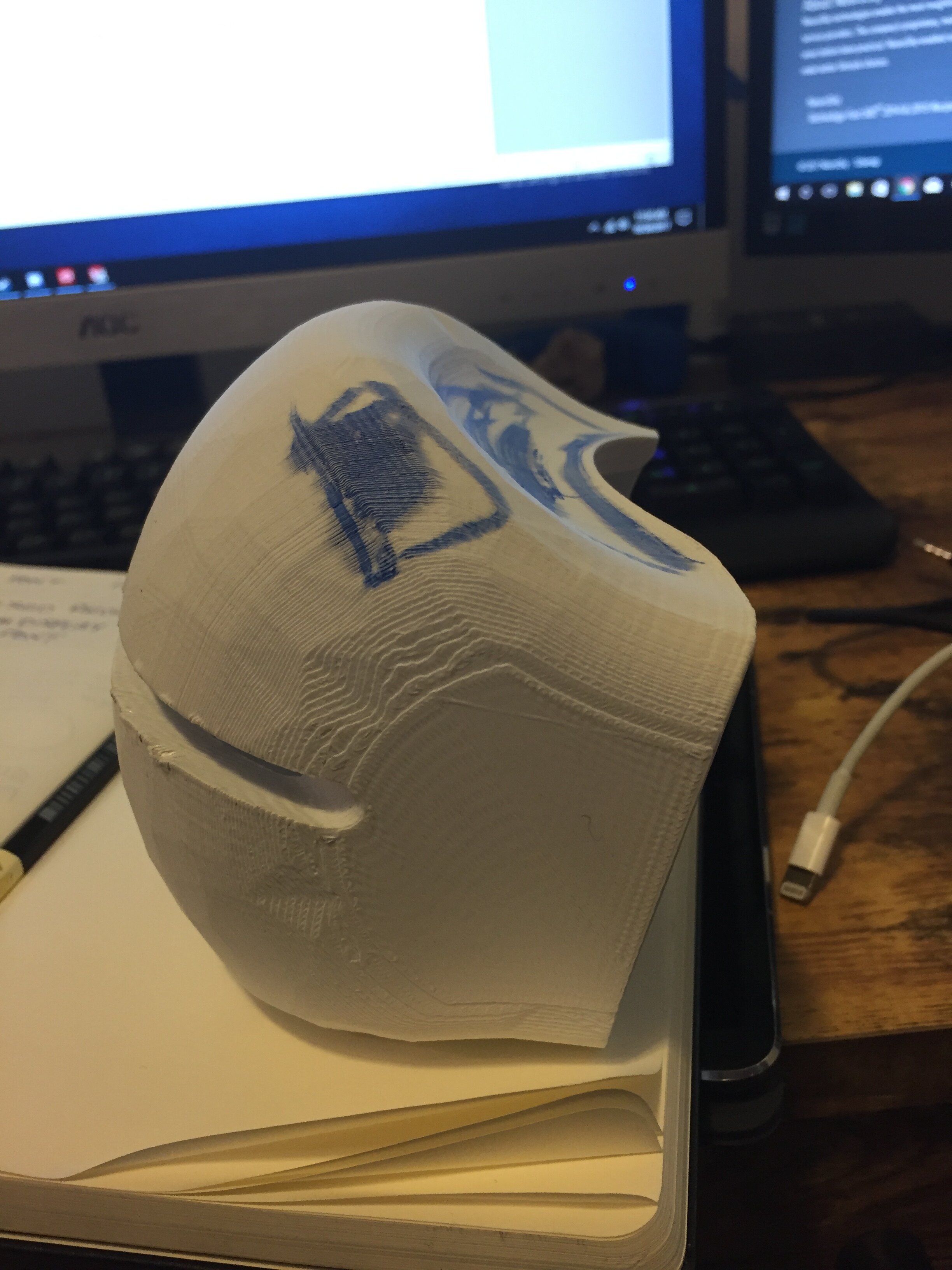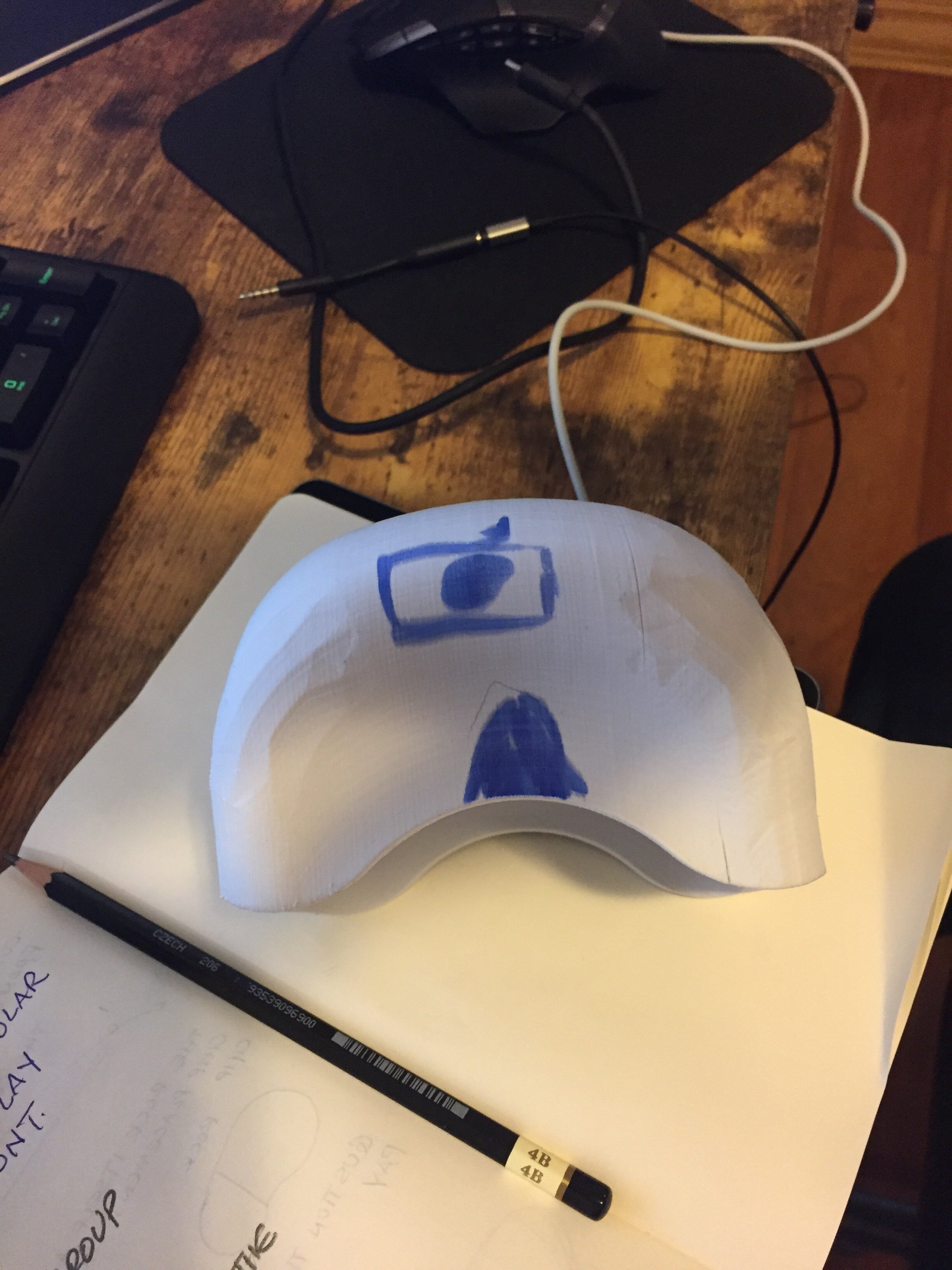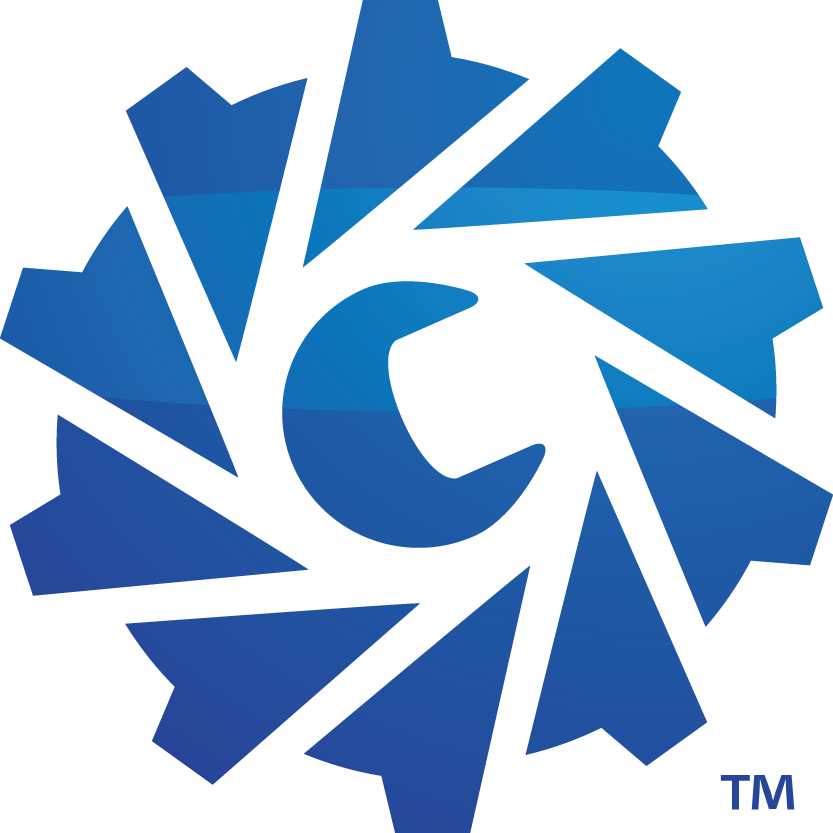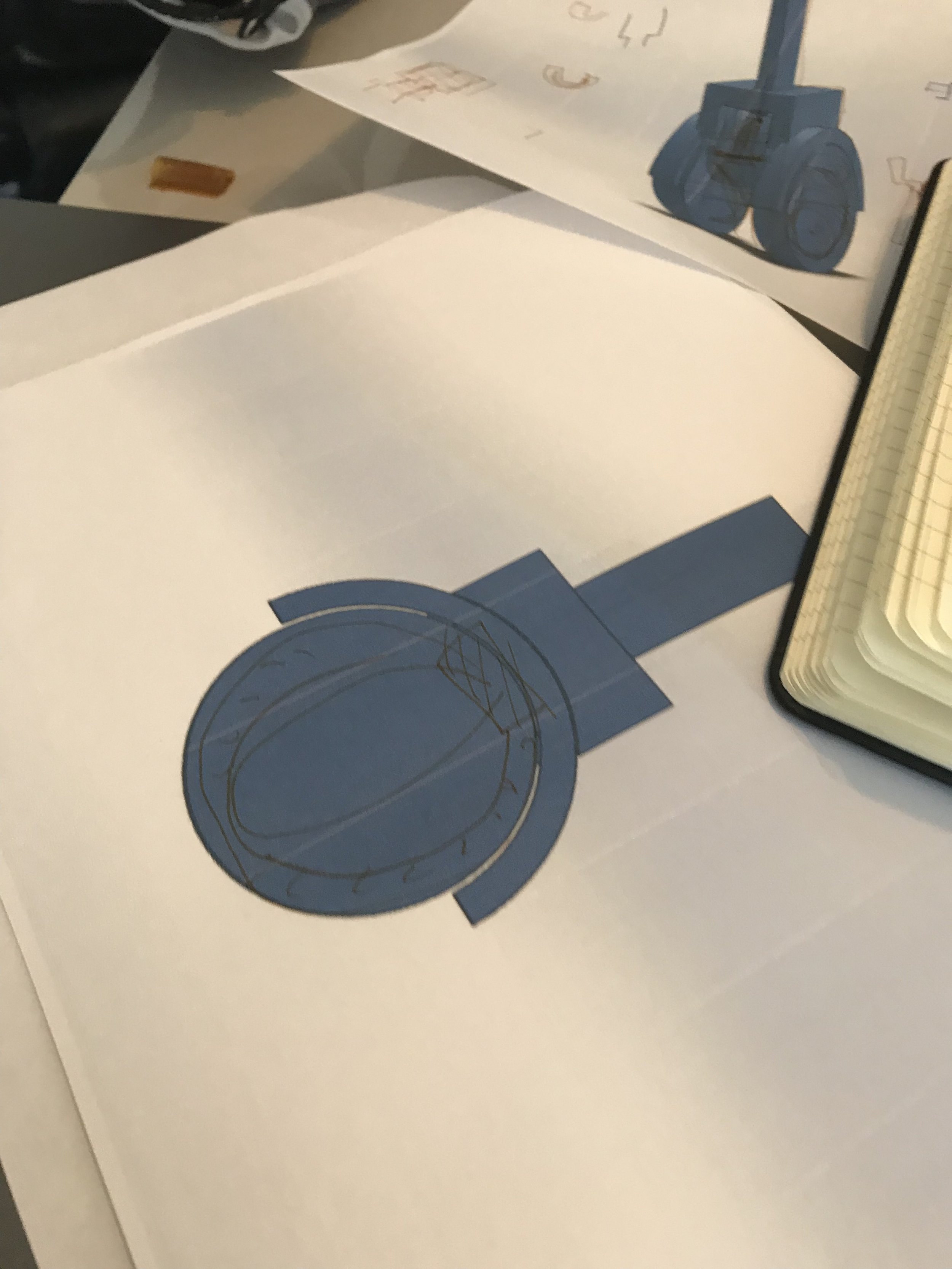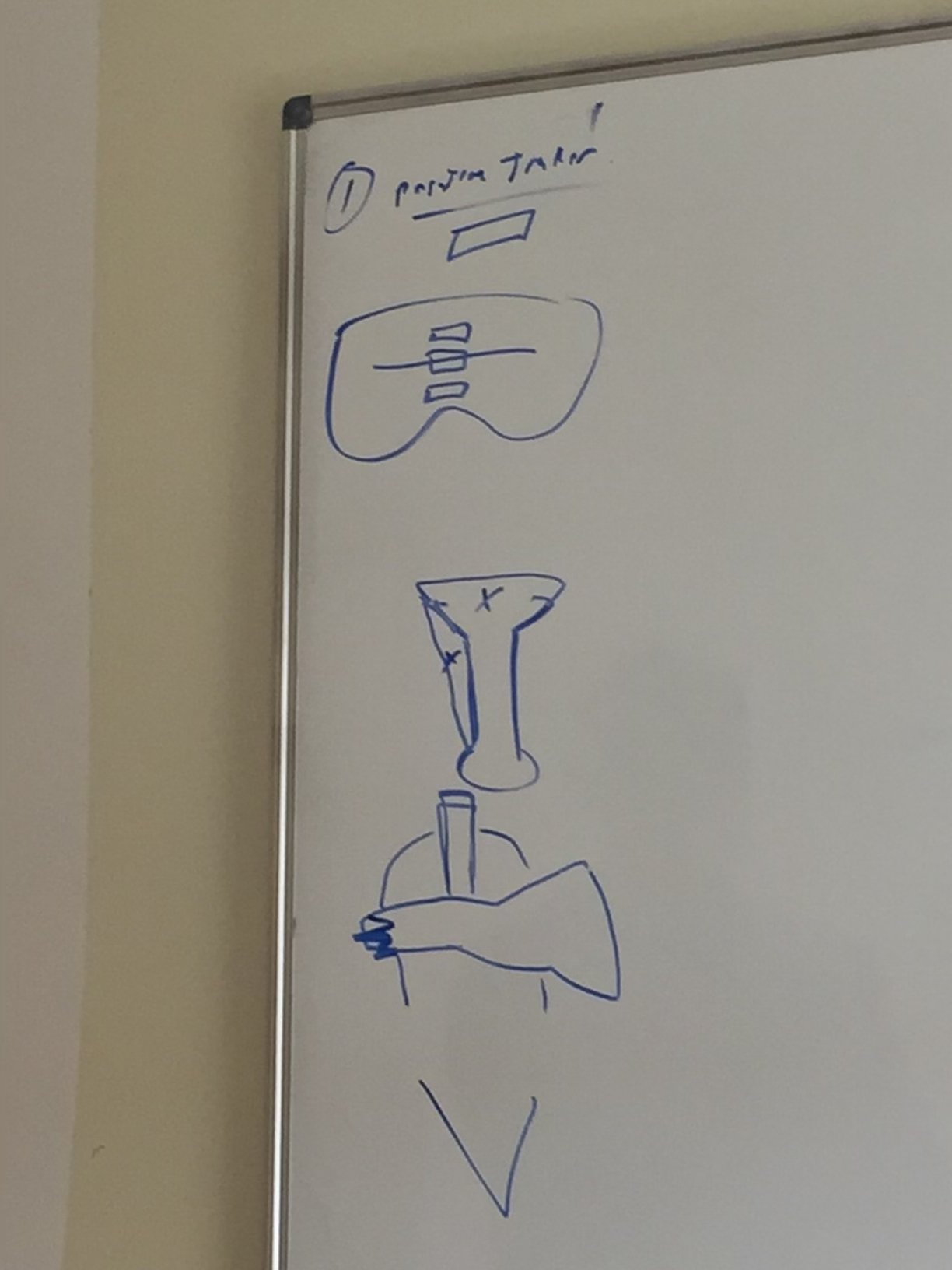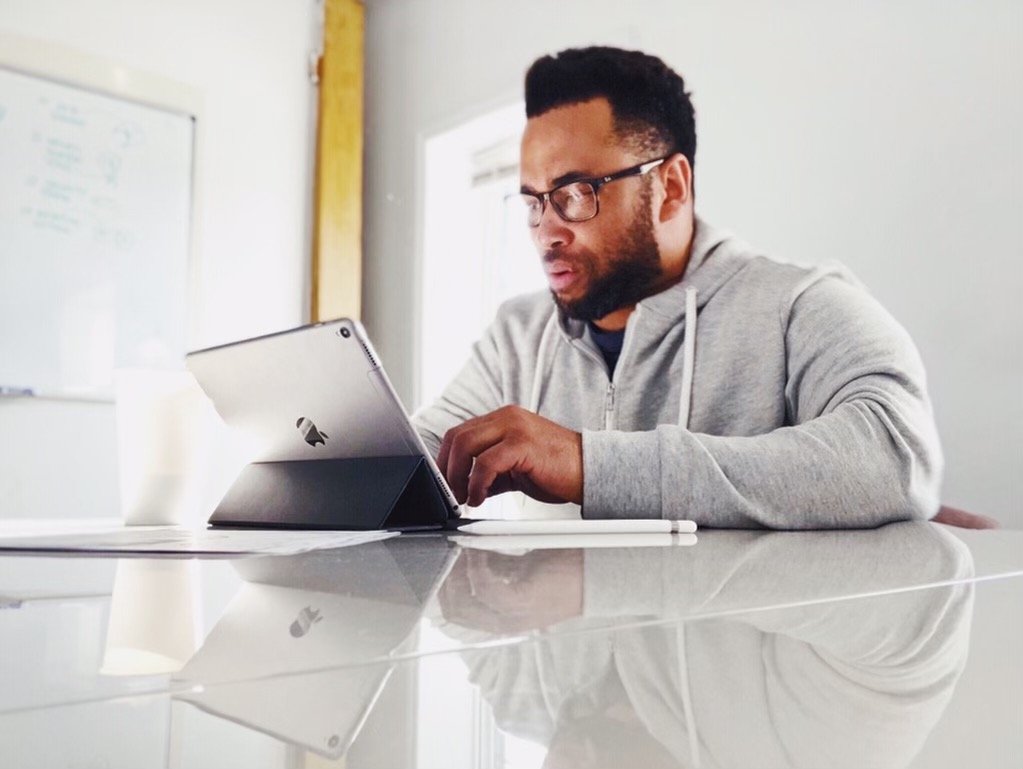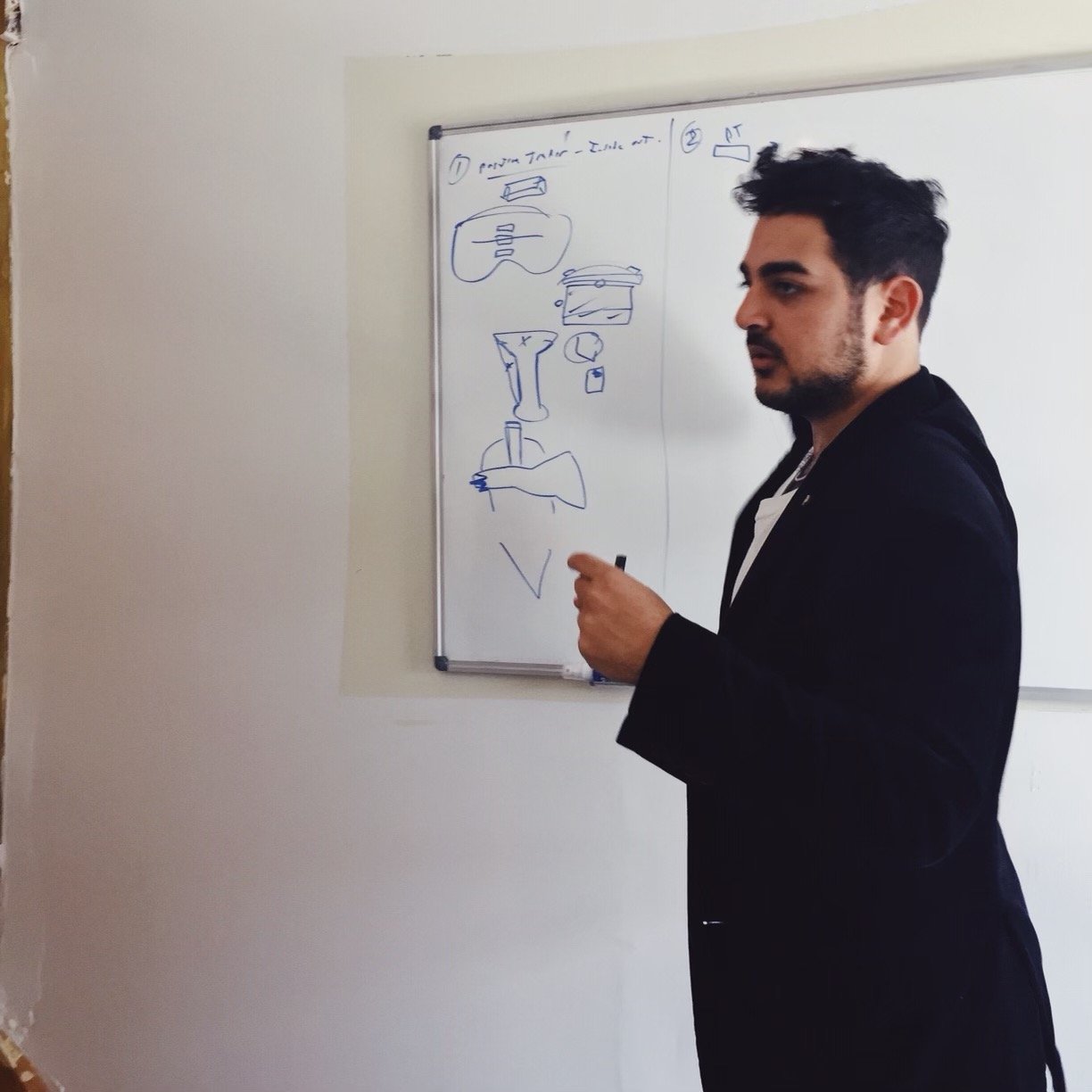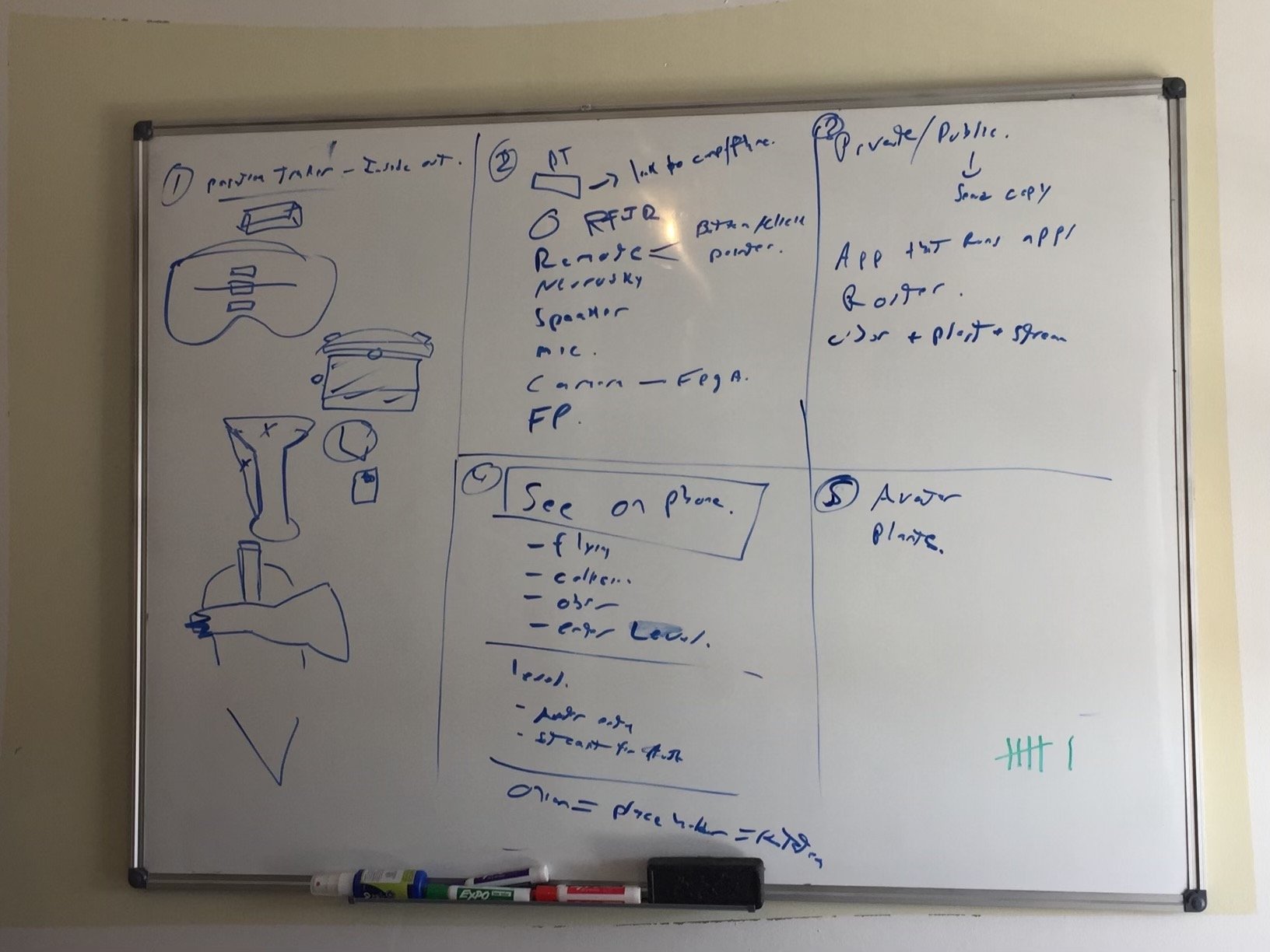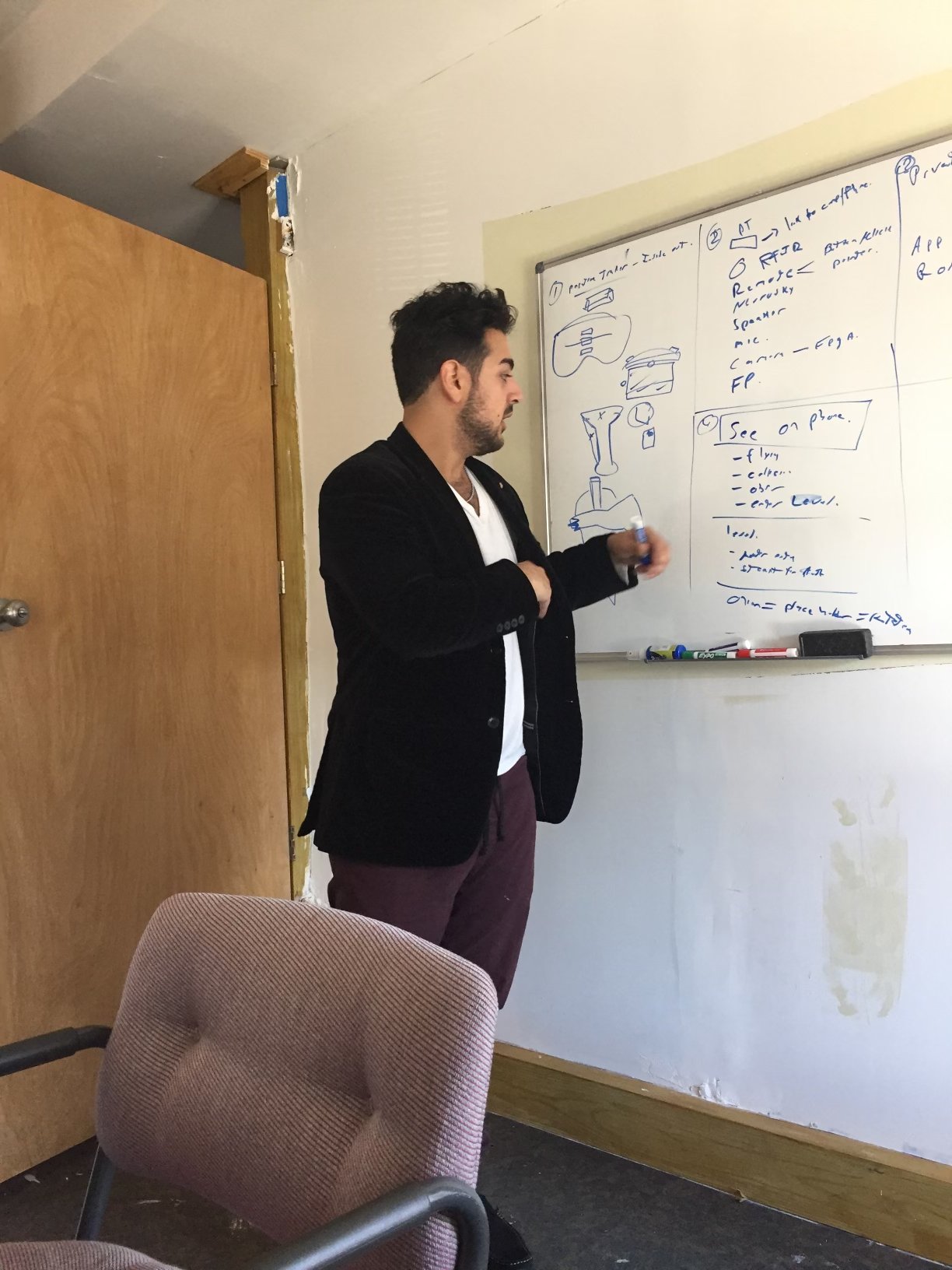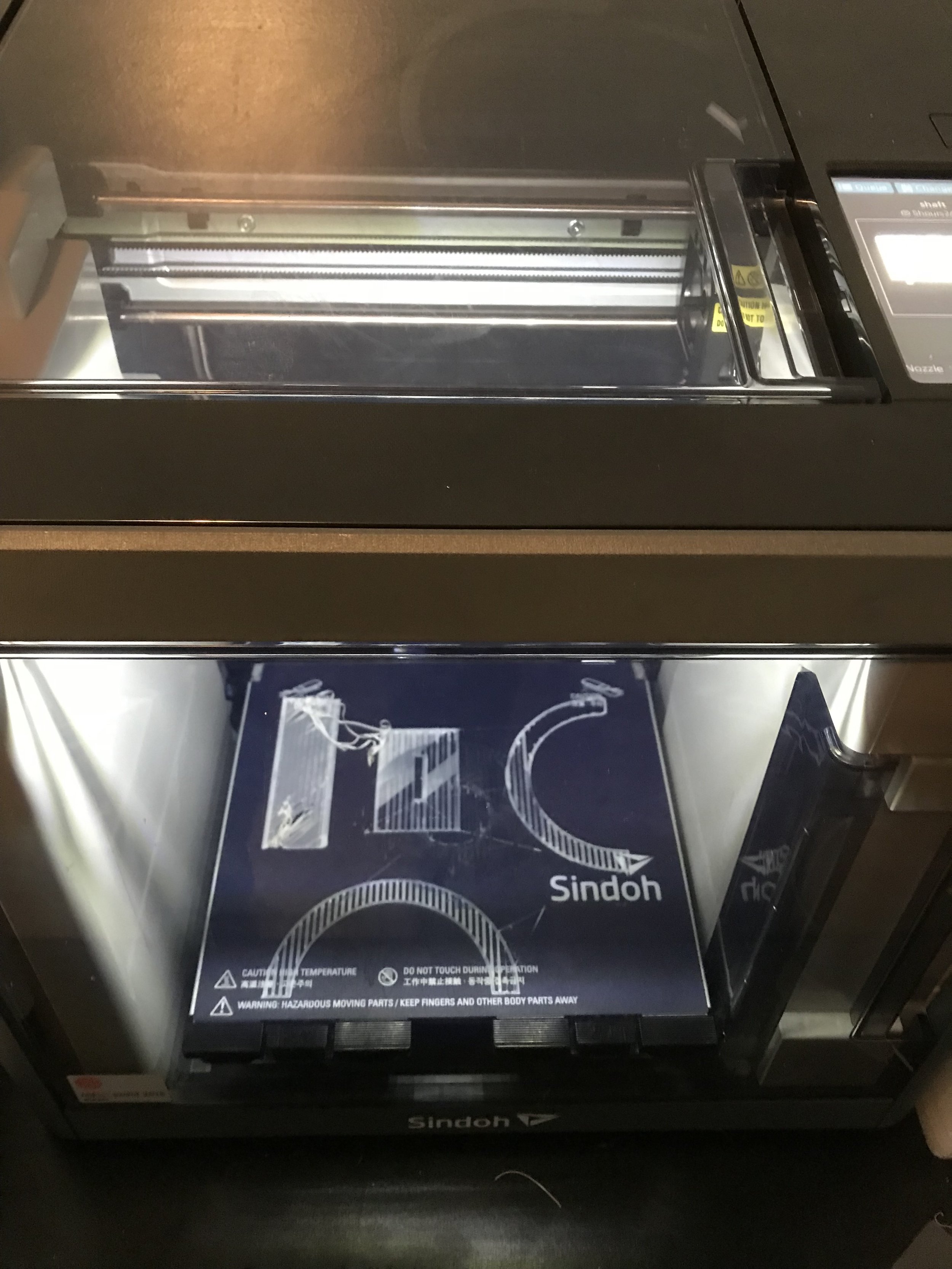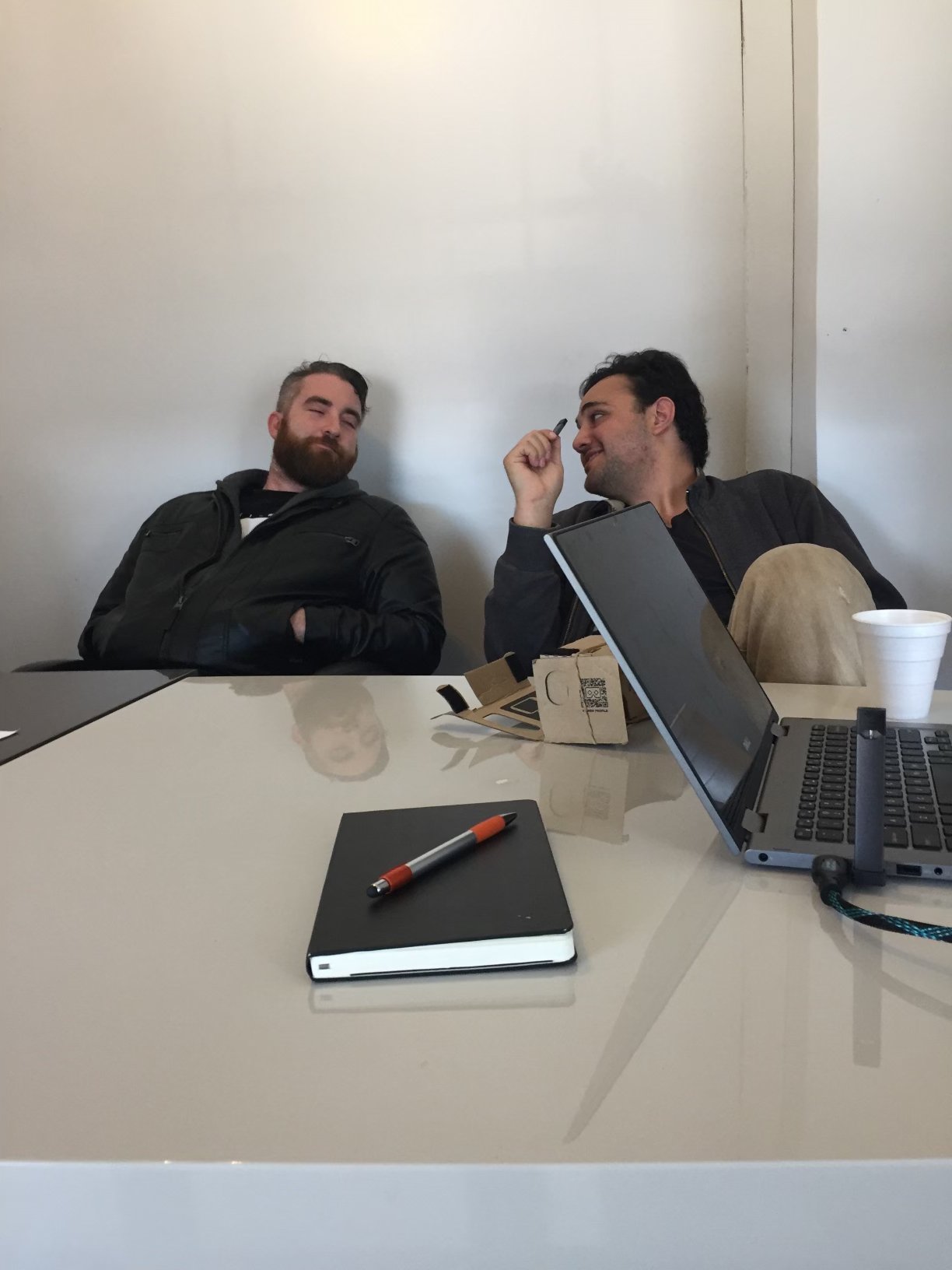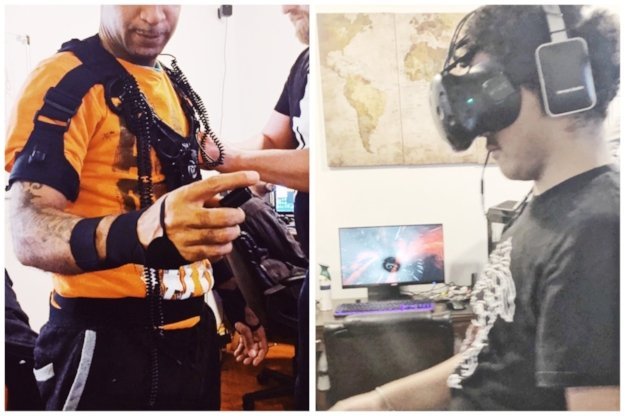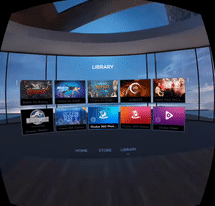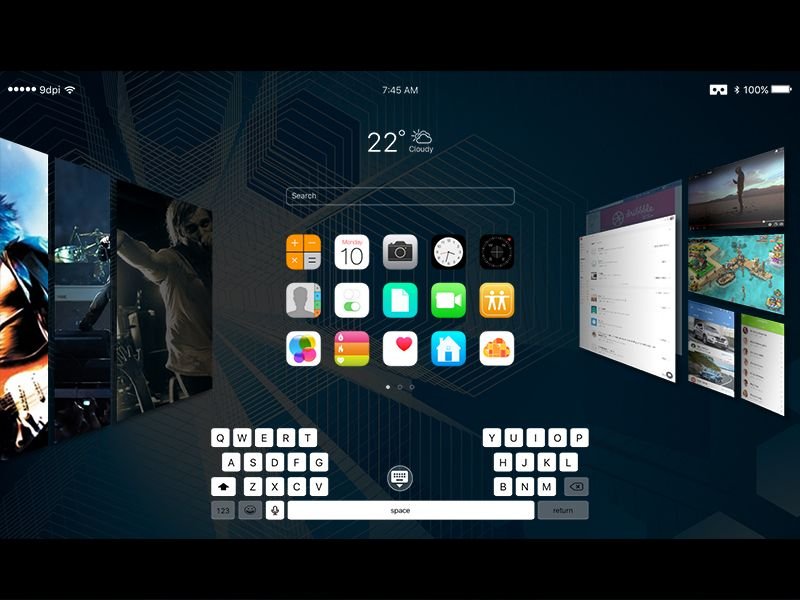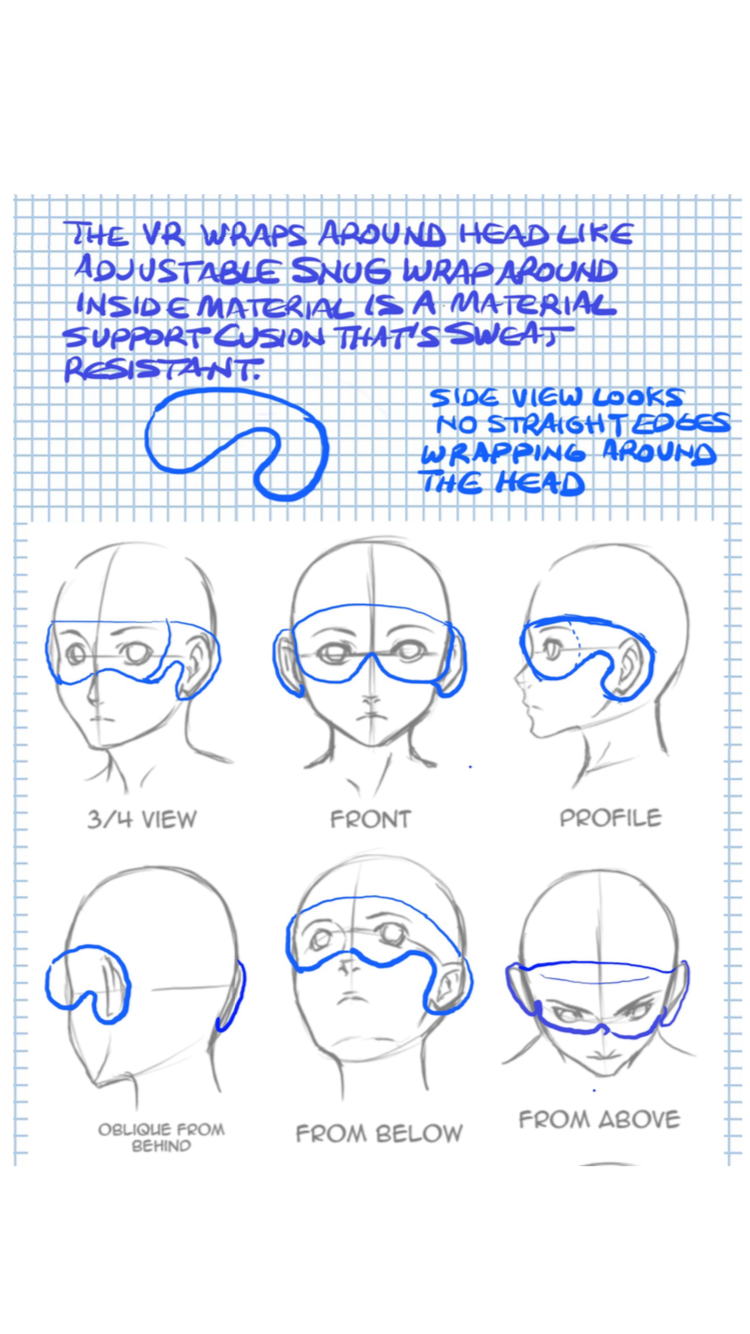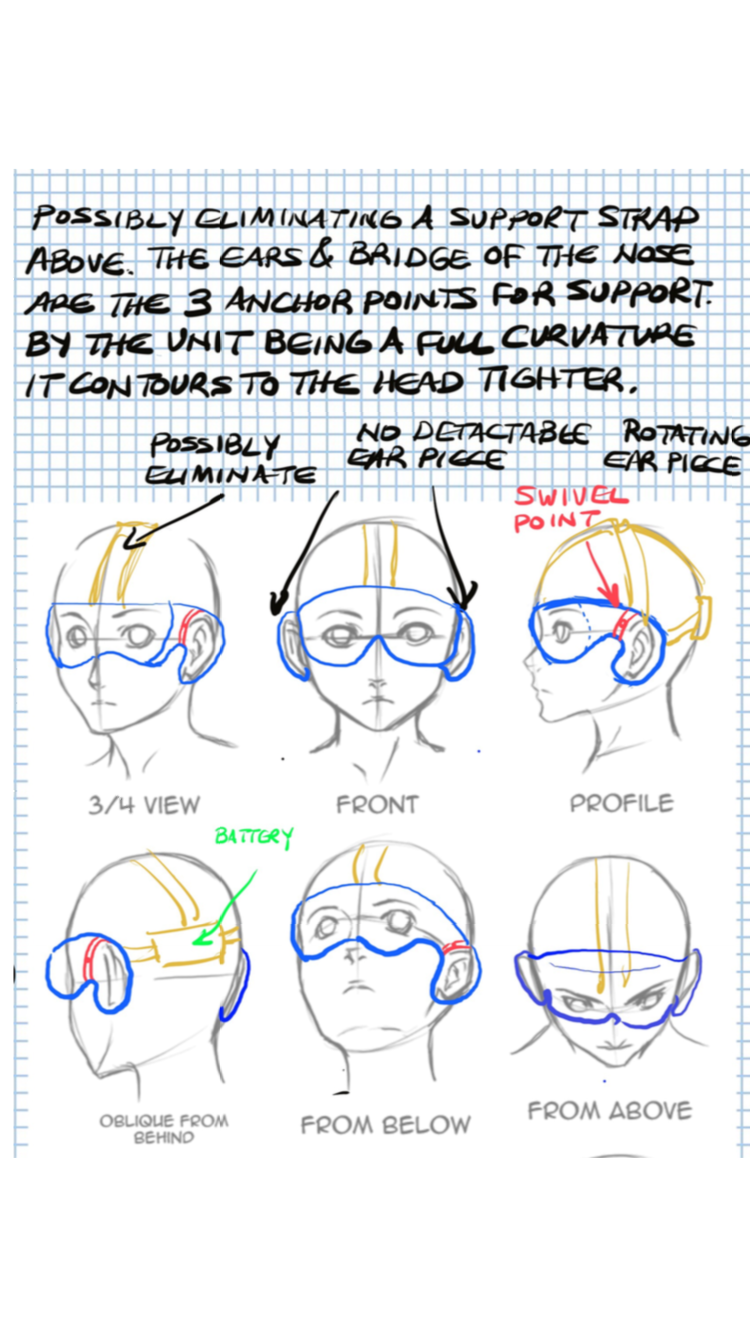Scimund - VR/AR Prototype
Think Tank: Research & Development
The experience of users will be essential since what's being talked about is a change to the fundamental human and computer interface. Humans currently interface with computers, game consoles, virtual reality, mobile devices, and tablets. Over the next decade, we will look at a shift towards other yet-to-be-designed instruments that will enable us to see the real world. As technology rapidly changes with AI (artificial intelligence) and data research, it will also give a direction for where the UI needs to be. The design strategy is the main factor in human responses to mobile apps, wearables, and websites. Finding visuals while applying the agile methodology and design theory will continue to be the focus of UI/UX (user interface/user experience).
AR/VR (augmented reality/virtual reality), in all design stages from conceptual, prototyping, manufacturing, and branding, means that everything from engineering to marketing will be powered by the UI/UX platform. Over time, I have cross-trained myself from 3D modeling with such programs from Catia and Solidworks to Shapr3D in my early years as a design engineer going into the UI/UX platform, which has assisted me have a better grasp of the challenges I face today with the virtual reality platform. Yet, I realize that I am an exception knowing soon that there will be a shortage of designers who are capable of designing in AR/VR.
Internet interfacing is not the same as working on other smart devices like mobile phones. This technology creates a whole set of new models for designers to contemplate and re-imagine. For example, UI/UX designers get to start conceptualizing what we have yet to consider. The IoT (Internet of things) in UI design means that the designers will be faced with specific challenges such as making functionality and UX optimal with the assistance of sensors. Another example is designing smart wearables and meeting UI's expectations.
When it does indeed spread over every aspect of our daily lives in the way of lightweight, low-friction hardware, what will the fields of UX/UI look like then? What strategies will have the most substantial impact? We are only just beginning to talk about which tactics will stand the test of time. Hence, a conclusion for UX/UI in VR could be that successful efforts will be the ones that exhibit an up-close understanding of storytelling principles. This does not necessarily regard the deploying of a sequential narrative but the activation of the descriptive aspects of our minds with related information.
A camera inset on a VR headset can notice where your hands are relative to the visual content and concerning how far the content is away from your head. Voice commands can also help control your graphics orientation and decision-making environment. Learning from what makes VR devices operational, we can use that engineering to revise fundamental guidelines for UI/UX design. Face identity is heading in the right direction, where even an expression can open an app or trigger a scroll up or down by merely nodding your head. In time, technology will be advanced enough to support face identities on smartwatches. Eye tracking or gazing has now played a factor. For instance, I'm in a meeting and can't really use my hands in front of my face, so providing input for a mobile phone means the ability to swipe, use finger pinching, or use voice. Common sense and UI are vital elements that constitute the liaison between wearables and mobile apps. It would be helpful to place frequently-accessed UI in comfortable-to-reach areas, including putting pieces in the center of the interface.
UI/UX must evolve to embark further into the virtual reality world while remaining competitive among other data collection and technology intelligence. I believe it will also become a part of things that are similar. Aerospace/defense simulations, meteorology, and even bioengineering will eventually need UI/UX to further advance data analyzation, research, and development that will not only benefit consumer satisfaction but also improve business logistics. MR (mixed reality) is where physical and digital objects co-exist and interact in real time, as it merges both the real and virtual worlds to create new environments and visualizations. UI/UX will help make every wearable innovation in the future user-friendly by embarking further into Virtual Reality.
Design Management
A major challenge is achieving comfort and function. In the IoT design process, it's important to consider material selections and other specifications. Adhesive materials are main factors of wearables, research and development on performance characteristics, analyzing biocompatibility and stress testing during the primary stages of product development. Whatever it is, the way you tell your story online can make all the difference.
In rebranding or starting a project design, I led a diverse and multifaceted team of creative, technical, and administrative staff and was able to ensure that all deliverables were met on time and budget. To successfully steer a project to completion, a good project manager must be able to lead and inspire a dynamic team. The ability to communicate effectively and keep people motivated can all come down to the candidate's communication and management style. I would describe myself as a direct and approachable manager with an open door policy, which makes it easy for team members to discuss issues or problems as they develop. Managing a project with many moving parts requires the ability to balance and solve competing priorities. I try to structure each project so that each team member works efficiently on a task by task basis to meet larger project milestones and objectives. I try to give the team the freedom and space they need to get the job done while keeping an eye on the big picture to ensure that we are on track to meet the project goal, In a perfect world, projects would move along a linear trajectory. In reality, there are often competing tasks that all demand immediate attention and resources. In this situation, I would work with the team to identify the most mission-critical tasks to keep the project moving forward and help the team to re-evaluate the most urgent priorities at the moment. Teams of all sizes will inevitably encounter friction and a member or two who struggle to perform up to standards. The ability to keep people motivated and identify problem areas (and how to solve them quickly and efficiently). Keeping every member of the team performing at their very best is one of my top priorities on each project. My first step would be to work with the team member in question to identify where they are struggling and try to design actionable and manageable steps that they can take right away to get back on track. Every project and organization measures success differently, and many factors go into success in addition to whether a project was completed on time and budget. While the client and sponsors were happy with the results, I believe there is always room to improve and learn from the experience. I learned how to identify and address problems as they arise, and in the future, I would spend less time on non-essential tasks. If our project hits a roadblock my philosophy is to act quickly but efficiently. I would work with the team to identify what isn't working and help to design better workflows to get the project moving in the right direction.
Engineering has always been a part of our life. I always wanted to become a design engineer. Drafting is sort of a way to design in today’s world. Yet appreciate being the drafting board learn to draw lines control circles using tools waiting for technology advance. It has enlightened. It has been educating. Given me an image that any computer-aided drafting is not able to assist. It is a work of art. It is a work art for engineers. To see how much work and effort was put in drawing yet a the same time using mathematics using analytics using science to craft something to help this world advance in its innovation. Now today I look back at my drafts it looks like a work of art. I plan to create more work of drafting and one day make an exhibit of it. What you see here in this Gallery is just a few examples of my work as I was learning the art of drafting.
Agile: Benchmarking, Prototype & Manufacturing
